#its art that cannot exist without participation of the viewer and that participation needs to be considered as an active force.
Text
On the topic of ‘bad mascot horror video games for kids’ the exception to the rule (or rather, something that understood the assignment) would be My Friendly Neighborhood.
I don’t want to spoil anything if you haven’t booted up the game before, but just…don’t be fooled by jumpscare compilations or the character design. From the opening cutscene this game grabs you by the fucking throat. The mechanics have thought put into them, the voice acting is top notch, and christ the fucking story - a complete story, one that has an end that isn’t promised in future ‘chapters’ or left ambiguous.
Yes, it has jumpscares from goofy muppet monsters, but they’re not cheap tricks. Once you learn how the game works they’re easy to avoid or at the very least anticipate - not to mention they’re survivable with the healing mechanic. And just when you think the scares are done, when you’re well into the game and have all the tools you need to navigate around potential jumpscares, the final act dunks you into the deep-end with the actual horror and nightmare fuel puppets.
I’m not sure how much the game as a whole qualifies as ‘horror,’ but it’s certainly being lumped in with the Whatever-Mascot Horror Game of the Week genre. Which is a shame because My Friendly Neighborhood is leagues ahead of those other games. It has more in common with survival horror than it does with mascot horror in terms of gameplay and tropes. It’s literally just the ‘monster’ designs leading people to assume its another Poppy Playtime clone complete with half baked story and repetitive, unimaginative gameplay loops. And that’s so far from the truth -
My Friendly Neighborhood is like if Sesame Street and Resident Evil had a beautiful muppet baby that opened its eyes to have an existential crisis when confronted with the horrors and apathy of modern capitalism.
#ra speaks#personal#video games#mascot horror#survival horror#my friendly neighborhood#I’m not trying to be harsh on the mascot horror genre but let’s be real. a lot of those games aren’t made from genuine joy for the genre.#which is a shame because as MFN shows you CAN make a kid friendly horror game that CARES deeply about the message and story it has to tell.#a lot of ‘click bait’ video games these days aren’t…games. they’re walking simulators. at best a compilation of fetch quests w flavor text.#video games are an ART medium. what emotions are you trying to evoke. what are you trying to communicate beyond language.#its art that cannot exist without participation of the viewer and that participation needs to be considered as an active force.#the player is not passively turning the page they are writing the story the rules the world with you. but if there’s no genuine love for it#from the creator…what is there? what’s left when the player is a vehicle for YouTube jumpscare clickbait and not an integral piece of art?#I’m rambly today. sorry.
137 notes
·
View notes
Photo

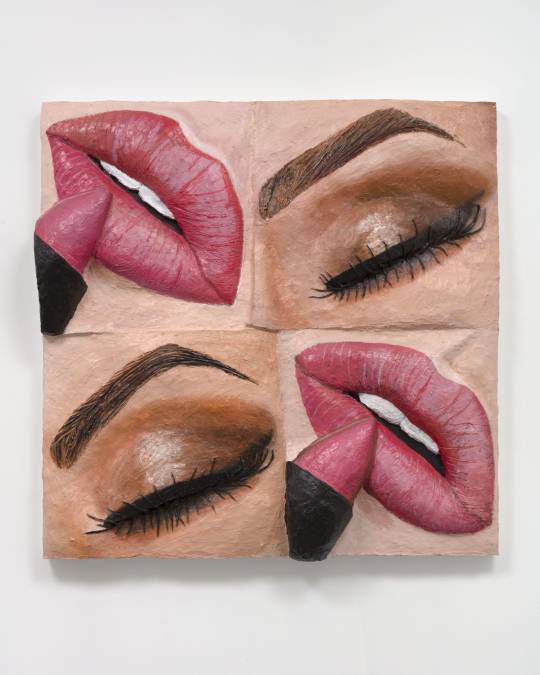



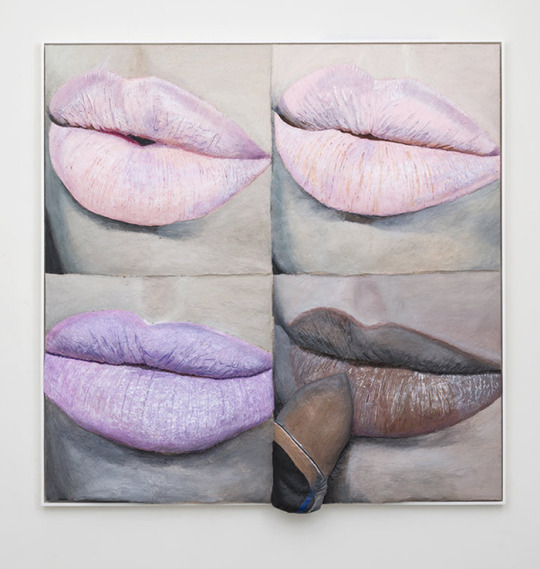


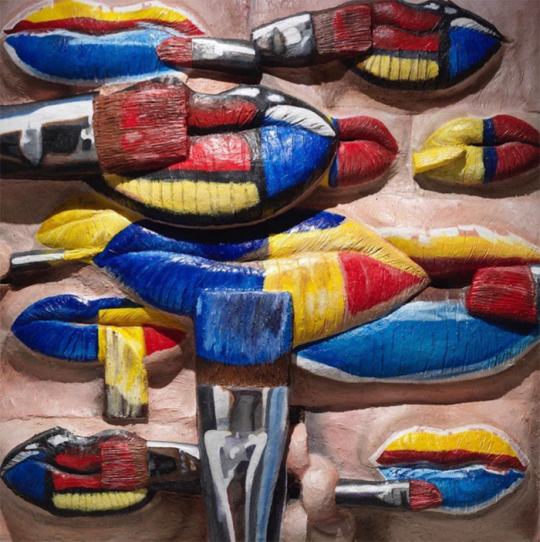
Artist Gina Beavers Satirizes Our Insatiable Appetite for Personal Beauty in Her New Show at Marianne Boesky
Makeup as Muse: Gina Beavers
November 28, 2020
Despite my art history background and general love of art, I am less than eloquent when writing about it. Nevertheless I will continue soldiering forward with the Museum's Makeup as Muse series, the latest installment of which focuses on the work of Gina Beavers in honor of her recent show at Marianne Boesky Gallery. Beavers' practice encompasses a variety of themes, but it's her paintings of makeup tutorials that I'll be exploring. Since I'm both tired and lazy this will be more of a summary of her work rather than offering any fresh insight and I'll be quoting the artist extensively along with some writers who have covered her art, so most of this will not be my own words.
Born in Athens and raised in Europe, Beavers is fascinated by the excess and consumerism of both American culture and social media. "I don't know how to talk about this existence without talking about consumption, and so I think that's the element in consuming other people's images. That's where that's embedded. We have to start with consumption if we're going to talk about who we are. That's the bedrock—especially as an American," she says. The purchase of a smart phone in 2010 is when Beavers' work began focusing on social media. "[Pre-smart phone] I would see things in the world and paint them! Post-smartphone my attention and observation seemed to go into my phone, into looking at and participating in social media apps, and all of the things that would arise there...Historically, painters have drawn inspiration from their world, for me it's just that a lot of my world is virtual [now]."
But why makeup, and specifically, makeup tutorials? There seem to be two main themes running through the artist's focus on these online instructions, the first being the relationship between painting and makeup. Beavers explains: "When I started with these paintings I was really thinking that this painting is looking at you while it is painting itself. It’s drawing and painting: it has pencils, it has brushes, and it’s trying to make itself appealing to the viewer. It’s about that parallel between a painting and what you expect from it as well as desire and attraction. It’s also interesting because the terms that makeup artists use on social media are painting terms. The way they talk about brushes or pigments sounds like painters talking shop." Makeup application as traditional painting is a theme that goes back centuries, but Beavers's work represents a fresh take on it. As Ellen Blumenstein wrote in an essay for Wall Street International: "Elements such as brushes, lipsticks or fingers, which are intended to reassure the viewers of the videos of the imitability of the make-up procedures, here allude to the active role of the painting – which does not just stare or make eyes at the viewer, but rather seems to paint itself with the accessories depicted – literally building a bridge extending out from the image...Beavers divests [the image] of its natural quality and uses painting as an analytical tool. The viewer is no longer looking at photographic tableaus composed of freeze-frames taken from make-up tutorials, but rather paintings about make-up tutorials, which present the aesthetic and formal parameters of this particular class of images, which exist exclusively on the net." The conflation of makeup and painting can also be perceived as a rumination on authorship and original sources. Beavers is remaking tutorials, but the tutorials themselves originated with individual bloggers and YouTubers. And given the viral, democratic nature of the Internet, it's nearly impossible to tell who did a particular tutorial first and whether tutorials covering the same material - say, lip art depicting Van Gogh's "Starry Night" - are direct copies of one artist's work or merely the phenomenon of many people having the same idea and sharing it online. Sometimes the online audience cannot distinguish between authentic content and advertising; Beavers's "Burger Eye" (2015), for example, is actually not recreated from a tutorial at all but an Instagram ad for Burger King (and the makeup artist who was hired to create it remains, as far as I know, uncredited).
Another theme is fashioning one's self through makeup, and how that self is projected online in multiple ways. Beavers explains: "I am interested in the ways existing online is performative, and the tremendous lengths people go to in constructing their online selves. Meme-makers, face-painters, people who make their hair into sculptures, are really a frontier of a new creative world...It’s interesting, as make-up has gotten bigger and bigger, I’ve realized what an important role it plays in helping people construct a self, particularly in trans and drag communities. I don’t normally wear a lot of make-up myself, but I like the idea of the process of applying make-up standing in for the process of self-determination, the idea of ‘making yourself’."
As for the artist's process, it's a laborious one. Beavers regularly combs Instagram, YouTube and other online sources and saves thousands of images on her phone. She then narrows down to a few based on both composition and the story they're trying to tell. "I'm arrested by images that have interesting formal qualities, color, composition but also a compelling narrative. I really like when an image is saying something that leaves me unsure of how it will translate to painting, like whether the meaning will change in the context of the history of painting," she says. "I always felt drawn to photos that had an interesting composition, whether for its color or depth or organization. But in order for me to want to paint it, it also had to have interesting content, like the image was communicating some reality beyond its composition that I related to in my life or that I thought spoke in some interesting way about culture." The act of painting for Beavers is physically demanding as well: she needs to start several series at the same time and go back and forth between paintings to allow the layers to dry. They have to lay flat to dry so she often ends up painting on the floor, and her recent switch to an even heavier acrylic caused a bout of carpal tunnel syndrome.
But it's precisely the thick quality of the paint that return some of the tactile nature of makeup application. This is not accidental; Beavers intentionally uses this technique as way to remind us of makeup's various textures and to ensure her paintings resemble paintings rather than a photorealistic recreation of the digital screen. "The depth of certain elements in the background of images has taught me a lot about seeing. I think I have learned that I enjoy setting up problems to solve, that it isn't enough for me to simply render a photo realistically, that I have to build up the acrylic deeply in order to interfere with the rendering of something too realistically," she explains. Sharon Mizota, writing for the LA Times, says it best: "Skin, lashes and lips are textured with rough, caked-on brushstrokes that mimic and exaggerate wrinkles and gloppy mascara. This treatment gives the subjects back some of the clunky physicality that the camera and the digital screen strip away. Beavers’ paintings, in some measure, undo the gloss of the photographic image."
Beavers also uses foam to further build up certain sections so that they bulge out towards the viewer, representing the desire to connect to others online. "Much of what people do online is to try to create connection, to reach out and meet people or talk to people. That is what the surfaces of my painting do in a really literal way, they are reaching off the linen into the viewer’s space," she says. This sculptural quality also points to the reality of the online world - it's not quite "real life" but it's not imaginary either, occupying a space in between. Beavers expands on her painting style representing the online space: "It’s interesting because flatness often comes up with screens, and I think historically the screen might have been read like that, reflecting a more passive relationship. That has changed with the advent of engagement and social media. What’s behind our screen is a whole living, breathing world, one that gives as much as it takes. I mean it is certainly as 'real' as anything else. I see the dimension as a way to reflect that world and the ways that world is reaching out to make a connection. Another aspect is that once these works are finished, they end up circulating back in the same online world and now have this heightened dimensionality – they cast their own shadow. They’re not a real person, or burger, or whatever, but they’re not a photo of it either, they’re something in between."
Let's dig a little more into what all this means in terms of makeup, the beauty industry and social media. Beavers' work can be viewed as a simultaneous critique and celebration of all three. Sharon Mizota again: "[The tutorial paintings] also pointedly mimic the act of putting on makeup, reminding us that it is something like sedimentation, built up layer by layer. There is no effortless glamour here, only sticky accretion. That quality itself feels like an indictment — of the beauty industry, of restrictive gender roles. But an element of playfulness and admiration lives in Beavers’ work. They speak of makeup as a site of creativity and self-transformation, and Instagram and other social media sites as democratizing forces in the spread of culture. To be sure, social media may be the spur for increasingly outré acts, which are often a form of bragging, but why shouldn’t a hamburger eye be as popular as a smoky eye? In translating these photographs into something more physical, Beavers asks us to consider these questions and exposes the duality of the makeup industry: The same business that strives to make us insecure also enables us to reinvent ourselves, not just in the image of the beautiful as it’s already defined, but in images of our own devising."
This ambiguity is particularly apparent in Beavers's 2015 exhibition, entitled Ambitchous, which incorporated beauty Instagrammers and YouTubers' makeup renditions of Disney villains alongside "good" characters. Blumenstein explains: "So it isn’t protagonists with positive connotations which are favoured by the artist, but unmistakably ambivalent characters who could undoubtedly lay claim to the neologism ambitchous, which is the name given to the exhibition. Like the original image material, this portmanteau of ‘ambitious’ and ‘bitchy’ is taken from social media and its creative vernacular, and is used, depending on the context, either in a derogatory fashion – for example for women who will do absolutely anything to get what they want – or positively re-interpreted as an expression of female self-affirmation. Beavers also applies this playful and strategic complication of seemingly unambiguous contexts of meaning to the statements contained in her paintings. It remains utterly impossible to determine whether they are critically exaggerating the conformist and consumerist beauty ideals of neo-capitalism, or ascribing emancipatory potential to the conscious and confident use of make-up."
More recently, Beavers has been using her own face as a canvas and making her own photos of them her source material, furthering her exploration of the self. "Staring at yourself or your lips for hours is pretty jarring. But I like it, because it creates this whole other level of self,” she says.
This shift also points to another dichotomy in Beavers's work: in recreating famous works of art on her face, she is both critiquing art history's traditional canon and appreciating it, referring to them as a sort of fan art. "I think a lot of the works that I have made that reference art history—like whether it's Van Gogh or whoever it is—have a duality where I really respect the artist and I'm influenced by them, and at the same time I'm making it my own and poking a little fun. And so, a lot of these pieces originated with the idea of fan art. You'll find all sorts of Starry Night images online that people have painted or sculpted or painted on their body. It comes out of that. And I just started to reach a point where I was searching things like 'Franz Kline body art,' and I wasn’t finding that, so I had to make my own. Then it started to get a little bit geekier. I have a piece in the show where I am painting a Lee Bontecou on my cheek, that's a kind of art world geeky thing—you have to really love art to get it."
Ultimately, Beavers perceives the intersection of makeup and social media as a force for good. While the specter of misinformation is always lurking, YouTube tutorials and the like allow anyone with internet access to learn how to do a smoky eye or a flawlessly lined lip. "I think for a lot of people social media is kind of like the weather. We don't have a lot of control of it, it just is. It gives and it takes away. There's no doubt that it has connected people in ways that are great and productive, allowing people to find communities and organize activism, it can also be a huge distraction...I approach looking at images there pretty distantly, more as a neutral documentarian, and I come down on the side of seeing social media as an incredibly useful, democratic tool in a lot of ways," she concludes.
On the other side of social media, Beavers is interested on how content creators help disseminate the idea of makeup as representing something larger and more meaningful than traditional notions of beauty. "I was super fascinated with makeup and all of the kinds of costume makeup and things you can find online that go away from a traditional beauty makeup and go towards something really wild and cool...I also had certain paintings in [a 2016] show that were much more about costume makeup, that were going away from beauty. That’s the thing that gives me hope. When I go through makeup hashtags on Instagram, there will be ten or twenty beauty eye makeup images and then one that’s painted with horror makeup. There are women out there doing completely weird things, right next to alluring ones." In the pandemic age, as people's relationships with makeup are changing, "weird" makeup is actually becoming less strange. Beavers' emphasis on experimental makeup is more timely than ever. I also think she's documenting the gradual way makeup is breaking free of the gender binary. She says: "I mean with makeup, and the whole conversation around femininity and makeup—I think for a long time when I was making makeup images, there were people that just thought, 'Oh, that's not for me,' because it's about makeup, it's feminine. But it’s interesting, the culture is shifting. I just saw the other day that Alexandria Ocasio-Cortez did a whole Instagram live where she was putting on her makeup and talking about how empowering makeup is for trans communities...some people see make-up as restrictive or frivolous, but drag performers show how it can be liberating and life-saving." Another point to consider in terms of gender is the close-up aspect of Beavers's paintings. With individual features (eyes, lips, nails) separated from the rest of the face and body and removed from their original context, they're neither masculine nor feminine, thereby reiterating that makeup is for any (or no) gender.
All I can say is, I love these paintings. Stylistically, they're right up my alley - big, colorful and mimicking makeup's tactile nature so much that I have a similar reaction to them as I do when seeing makeup testers in a store: I just want to dip my hands in them and smear them everywhere! I also enjoy the multiple themes and levels in her work. Beavers isn't commenting just on makeup in the digital age, but also self-representation online, shifting attitudes towards makeup's meaning, the relationship between painting and makeup, and Western art history.
What do you think of Beavers's paintings?
1 note
·
View note
Photo
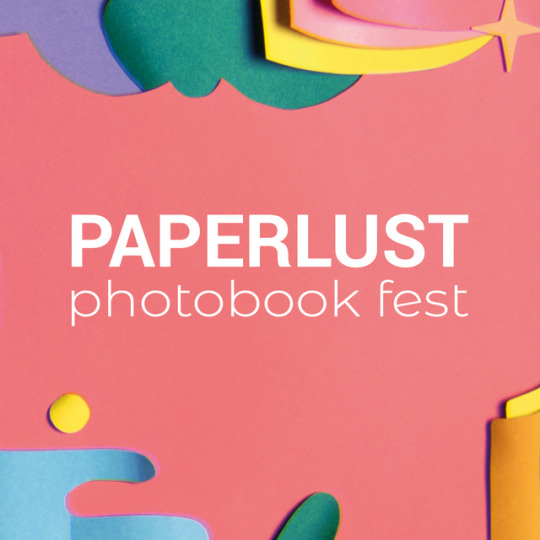
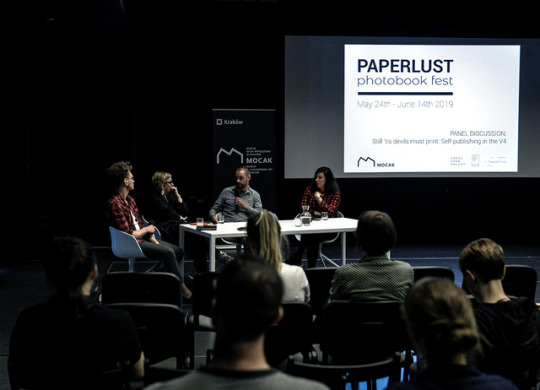
THE FIRST EDITION OF PAPERLUST PHOTOBOOKS FEST IS OVER!
IT COULD NEVER HAVE HAPPENED WITHOUT OUR PARTNERS, GUESTS, ARTISTS, VOLUNTEERS AND GUESTS. THANK YOU ALL!
by Fresh From Poland & Paper Beats Rock, funded by International Visegrad Fund
24.05 – 14.06.2019, Kraków
Paperlust Photobook Fest is a new biennial on the map of photographic events in Europe, stemmed from love to paper. Fest focuses on regional collaboration and aims to present the local self-publishing scene to the wider audience. The motivation behind the festival is to allow discovery while encouraging artistic exchange and explore the power of self-publishing as an offline medium, co-existing in the era of the Internet. PAPERLUST programme is formed of exhibitions, talks, book signings, panel discussion, workshop, photobook fair, reading room (chill zone and library) and dummy review. We invite small publishers, makers and established artists to present their practices, ranging from self-made publications and zines to book objects, albums, and photobooks published by the established institutions. As a reoccurring event, the festival aspires to become a photobook hub in Central and East Europe.
First edition – PAPERLUST Photobook Fest 2019. Art and self-publishing as a tool for social change is focused on the Visegrad region and has been created in close collaboration with the festival’s partners from Slovakia, Czech, and Hungary. It intends to gather local institutions, publishers, non-profit organizations and makers together to increase the visibility and exposure of the artists using photobooks to tell their stories, as well as strengthen, connect and empower the local art scene.
---
PAPERLUST PHOTOBOOK FEST OPENING & PHOTOBOOK. ASSET EXHIBTION OPENING
GALERIA I!, KRAKÓW, 24.05.2019

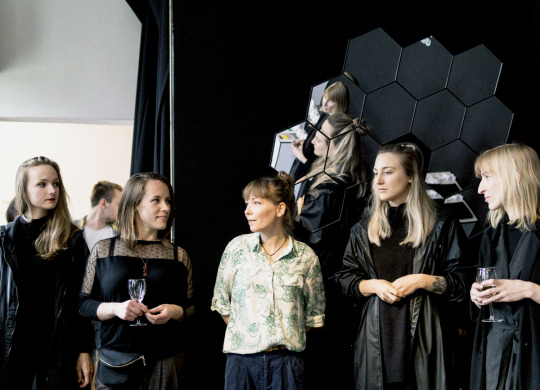
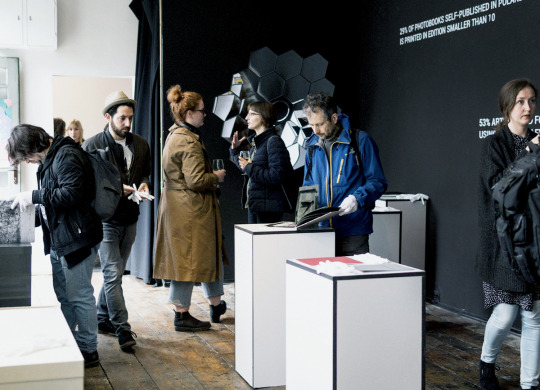
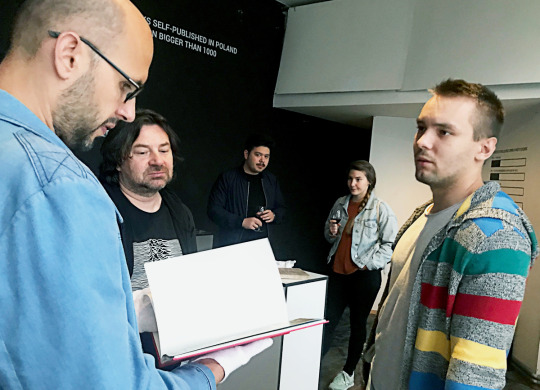
PHOTOBOOK. ASSET EXHIBTION
GALERIA I!, KRAKÓW, 24.05.2019
Exhibition Asset focuses on the economic and prestige aspects of art publications. An artistic book has become a tool for the emancipation of artist-maker. Having printed publication allows in an almost automatic way to get into the field of the world of art, or rather the history of art. It is often made with the purpose of creating a unique object, that might become a cultural asset.
Except for the context criterion, we do not have any other criteria for evaluation, what is a work of art and what is not. In any case, however, we need legitimacy – perhaps as time passes, distribution of power and who has the legitimacy to evaluate and give the status to a work of art will change. However, traditional, institutional bodies are still holding a strong position. Even though artists, as well as publishers, say that books are overproduced, that there is no environment, not enough audiences or market, publishing an art book still seems to be amongst the best ways to build up one’s position in the art world.
The exhibition presents the selection of books made with a purpose to become an asset, a self-standing piece of art, to bring an income or to became a valuable, collectable object.
Artists: Petr Fabo, Ivars Gravlejs, Agata Grzybowska, Blanka Győri and Máté Labu, Hubert Humka, Dominika Jackuliakova, Libuse Jarcovjakova, Martin Kochan, Wawrzek Kolbusz, Peter Kollanyi, Martin Kollar, Wojtek Mazan, Peter Puklus, Łukasz Rusznica, Michał Siarek, Jakub Stanek, Krystyna Jędrzejewska-Szmek & Łukasz Gniadek, Beatrix Szörényi, Milan Tittel, Tereza Zelenkova
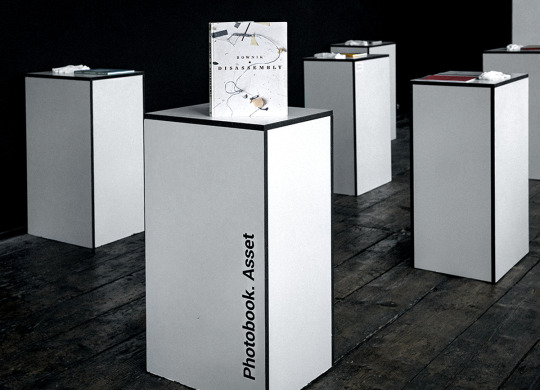

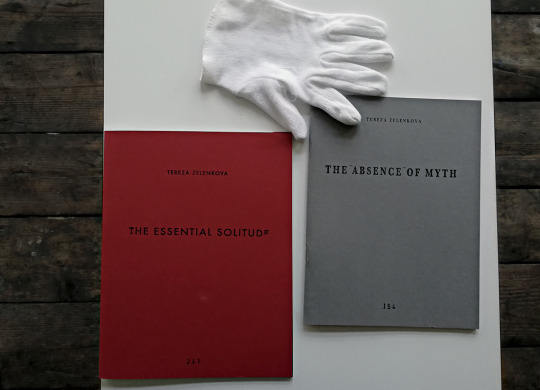

PHOTOBOOK. STORYTELLING EXHIBTION
ZNACZY SIĘ, KRAKÓW, 24.05 – 14.06.19
The show is a part of the series that focuses on various aspects of the photobook. A carefully designed exhibition presents the most interesting samples of the photobooks from the Visegrad region, that have been made out of the need to convey, usually a personal, story. Most of the presented works are either self-published or published in small editions, including hand-made or low-cost printed zine publications.
A book, as depicted in the show, becomes the means for communicating one’s personal experience, a cultural experience and the same time becomes an instrument protecting such experience from oblivion. The leitmotiv of a narration underlines the role of the recipient as an active participant/interpreter of the work of art.
Low-cost self-publishing is here a starting point for a polemic about the nature of the medium. The dissemination using the most economic and least demanding means gives it the power of an independent statement. The questions asked by the authors are an attempt to reflect on the phenomena of this type of publications on the Central European market, their role, ways of production and presentation, as well as expectations of the recipient.
Artists: Tabori Andras, Ewa Behrens, Eva Benkova, Stanislav Briza, Radek Brousil, Jan Brykczynski, Magda Buczek, Kateřina Držková, Peter Fabo, Viola Fátyol, Lucia Gamanová, Aurélia Garová, Agnieszka Gotowała, Anna Hornik , Tomoya Imamura, Zuzana Ivašková, Tereza Kabůrková, Ines Karčáková, Joanna Margarethe Kischka, Deana Kolencikova, Jan Kolský, Viktor Kopasz, Paulina Korobkiewicz, Andrea Kurjakova, Katarzyna Ewa Legendź, Tomasz Liboska, Michał Loba, Alicja Łabądź, Maciej Moskwa, Boris Németh, Anna Orłowska, Krzysiek Orłowski, Ivana Paleckova, Igor Pisuk, Marcin Płonka, Piotr Pytel, Krzysztof Racoń, Kaja Rejczel Rata, Anka Sielska, Jakub Stanek, Juraj Starovecký, Dorota Stolarska, Eva Szombat, Budha Tamás, Jiri Thyn, Balázs Varju Tóth, Ondrej Urban, Imrich Veber, Dorotteya Veykony, Ján Viazanička, Lukasz Wierzbowski, Karolina Wojtas, Adrian Wykrota, Ficsór Zsolt, Kasia Zolich, KWAS (Karolina Wojtas, Agnieszka Sejud)
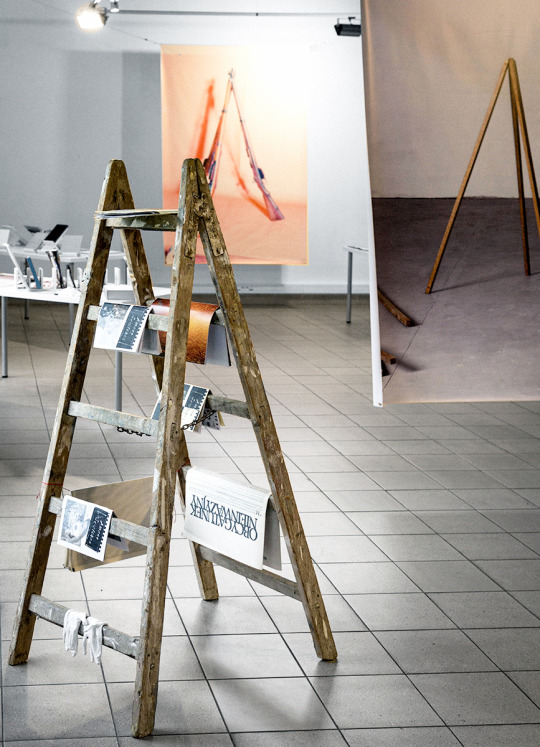
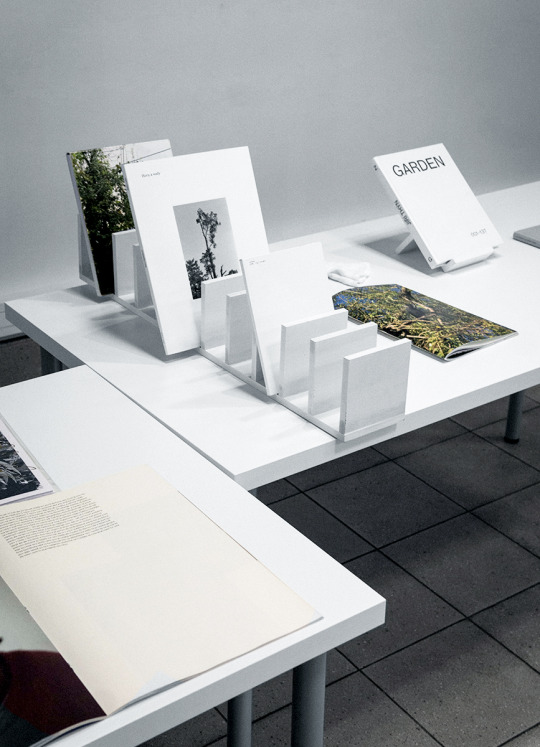
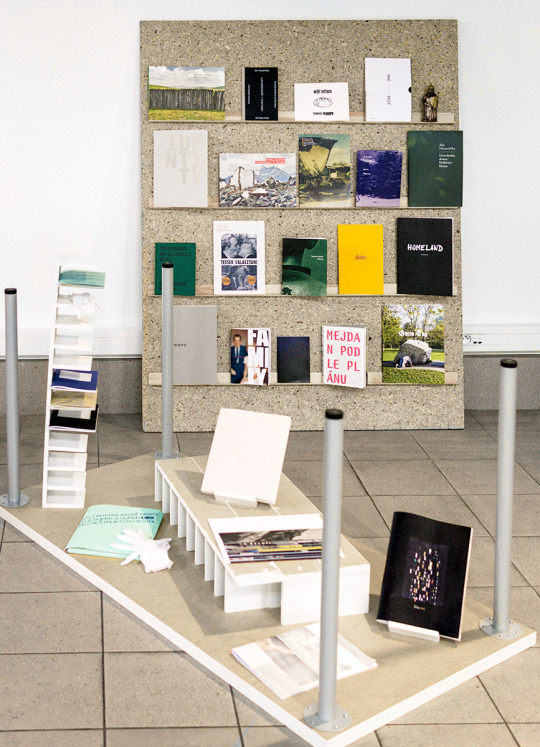
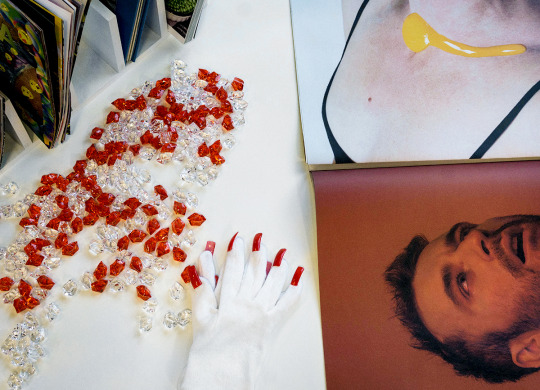
PHOTOBOOK. PROCESS EXHIBTION
NOŚNA GALLERY, KRAKÓW, 24.05 – 14.06.19
In this exhibition, we treat objects of art as a consequence and as an event. We explore the medium of a book as a work in progress submerged in group work, culture, and its own particularities. The exhibition investigates photobooks as a constantly evolving medium in relation to its potentiality. It includes drafts, dummies, sketches, and excerpts from different stages of the work that cannot be completed.
Referring directly to the activities related to the book in a political context, here also the core idea is an artistic prosumer activity, or more precisely its aspect pertaining to work with an art object, that is done by a particular group/ collective. The work created in this way is a result of the vision and ideas of all those involved in the creation process. We want to open a dialogue on the role of a photo editor in photographic publications. We want to define the route which the author- photo editor relation is going through and tension it generates through the choice of photographs, arrangement, strategy – a cycle of events related to the photographic book.
Process exhibition emphasizes a special presence and interactive lecture by Viktor Kopasz and his lifelong process of creating Diaries.
Kopasz’s works become a starting point to think about a book in terms of a multidimensional process. The process can be considered from the perspective of an artist, as a work that can be presented synchronously – from idea to implementation – or asynchronously, as a kind of spiral, which concentrically returns to the centre, and can be looked at from different positions. By disrupting the order of the beginning and the end, the book appears as a final product of the process, enters into a new cycle – that varies depending on the adapted presentation and distribution strategy.
It is a more specific kind of self-publishing, in the context of the previous examples, as it functions as a work of art on the border of the avant-garde, ready-made and niche, crafted publications. Kopasz consciously plays with the medium, its content, and formal potential.
Artists: Jakub Bors, Kuba Dabrowski, Tomoya Imamura, Viktor Kopasz, Tomasz Laczny, Konstancja Nowina Konopka
Książki twórców indywidualnych: Anna Ádám, Milan Adamčak, Hynek Alt, Aleksandra Vajd, Ján Ballax, Jakub Chromiński, Krystian Daszkowski, Peter Fabo (Petr Black FaBox), Lukas Hofmann, Nat Marcus, Alek Janicki, Karolina Jonderko, Ines Karčáková, Barbora Klímová, Paulina Korobkiewicz, Markéta Magidová, Barnabás Neogrády-Kiss, Lucia Nimcova, Lucia Papčová, Monika Pascoe Mikyskova, Tomas Pospech, Peter Puklus, Maciek Przemyk (Maciek P Myk), Catarina Simão, Anna Małgorzata Stankiewicz, Marta Szymanowska, Paweł Szypulski, Martina Šárovcová aka Kosmo Nauty – stories, Jan Sipocz, Bartłomiej Talaga, Konrad Trzeszczkowski, Imrich Veber, Karolina Zajaczkowska
Książki grup twórczych: Časopis X o súčasnej kresbe, Hurrikan Press, If I saw that in a gallery I would say, this is art, Paper Beats Rock workshop dummies
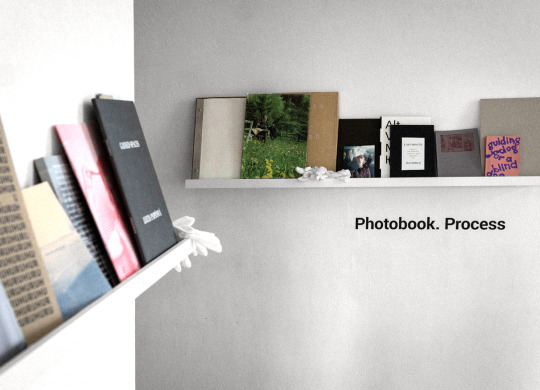
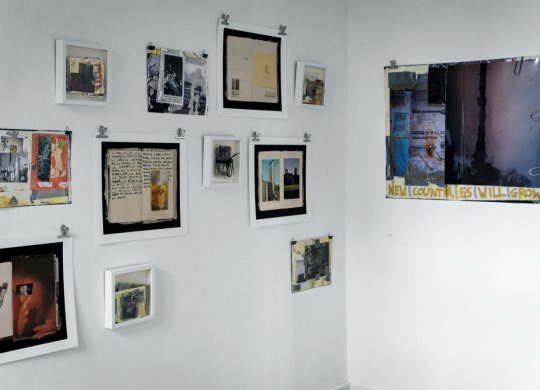
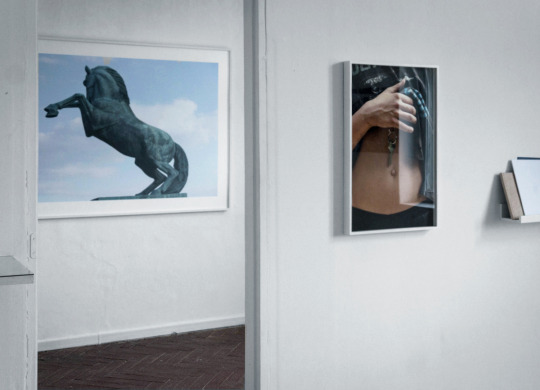
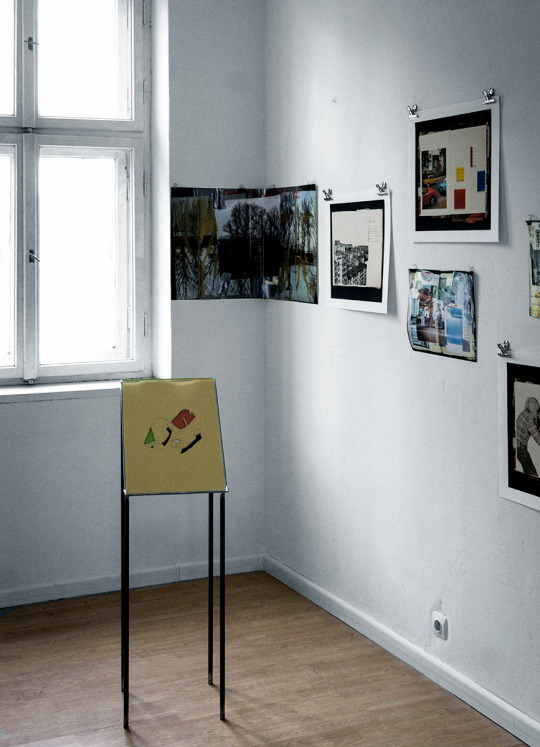
VIKTOR KOPASZ. PROCESS. PROLONGED IDENTITY. OPEN STUDIO
APTEKA GALLERY, KRAKÓW, 25.05 – 27.05.19
Our ambition is to involve the artist in the process of creating. Therefore, for a limited time, we want to change the gallery’s window into an artist’s studio. Artist, being present, will allow the viewers to look at a photographic book as part of a broader phenomenon. The artist is working for 3 days in the window of the gallery. The temporary display changes every day. It might be a radical move or a subtle shift of meaning that we can follow alongside the process.
The presentation of the works and performative character of the exhibition by Viktor Kopasz allows placing the contemporary phenomenon of the book boom in a historical context while creating an experience of the process itself in real time.


TOMASZ ŁĄCZNY. PROCESS. C18FE7N18. OPEN STUDIO
APTEKA GALLERY, KRAKÓW, 01.05 – 02.06.19
A live book-making process. The artist creates a hand-made photography artbook using traditional photography techniques with elements of improvisation (taking advantages of technical errors of wet plate photography). It’s the final step of the personal project “It All Is. And Nothing”. The audience has an opportunity to experience work in progress in the experimental stage of the process.
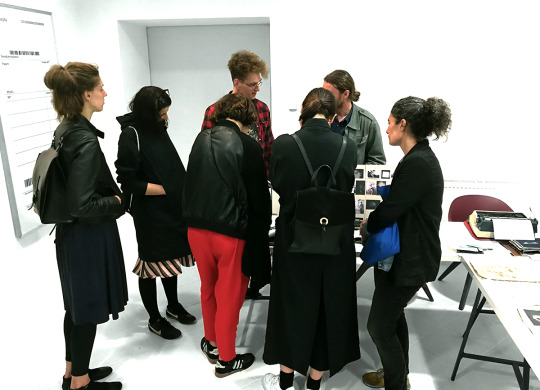
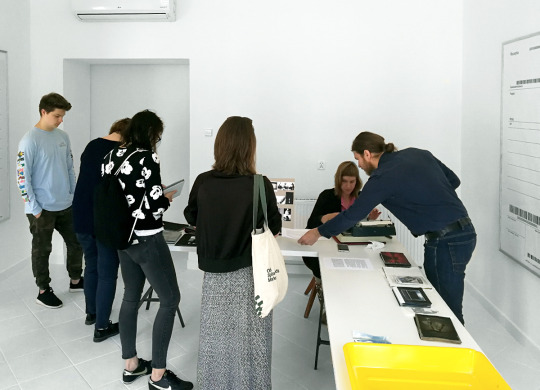
OPEN LIBRARY & CHILL ZONE + KIDS ZONE
MOCAK LIBRARY, KRAKÓW, 24.05 – 14.06.19
If you would like to explore art books in a quiet and peaceful space, Chill Zone is a place to sit down and discover our reading room. It is located in a beautiful and bright MOCAK Library. Presented publications – zines, photobooks, small editions’ publications from Visegrad countries – come from the MOCAK and Paper Beats Rock collections, private collectors, artists and the open call.
We invite kids to spent time in our Kids Zone, space prepared specially for youngest fans of paper.


PHOTOBOOK DUMMY REVIEW
TYTANO, KRAKÓW, 02.06.19
Paperlust Photobook Dummy Review is a project intended for emerging artists working with the medium of photography and art books. Event will allow to connect young talents with professionals, publishers and curators from different countries.
The Tytano space will open for one day for face-to-face discussions over the photobooks in progress. Submissions are open to everyone over 18 years old. Selected artists will be invited to meet four of our international experts. Handmade dummies are in focus, although digital projects and small self-published editions are also taken under consideration. The main aim of the event is to help artists to develop the ideas they are already working on.
On Saturday, 1st June, we invite all of the Participants and Experts of Photobook Dummy Review to join the Portfolio Evening, a special joint event organised by Krakow Photomonth and Paperlust Photobook Fest.
Our Experts: Franek Ammer, Stanislav Briza, Zsolt Ficsor, Zuzana Flaskova, Gábor Arion Kudász, Wiktoria Michałkiewicz, Tereza Rudolf, Olija Triaška Stefanovič

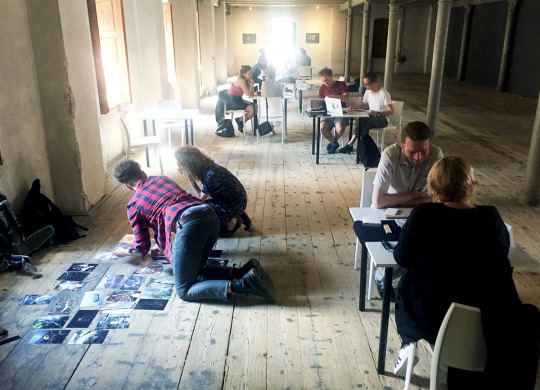
STILL ‘TIS DEVILS MUST PRINT – ARTIST TALKS
MILK, KRAKÓW, 01.06.19
Series of 3 talks focusing on different aspects of the photobook and self-publishing in Visegrad Group countries will take place at Milk Studio. Subjects TBA.
Self-publishing practices in Hungary in the post-digital era/ Beata Istvánkó
The notion of artists’ publishing activities has changed over the past decades, in particular with
the expansion of the art market and the globalization of artistic practices, combined with the advent of the digital era and the introduction of new modes of production and circulation. Print and digital projects employ experimental formats and blur distinctions between art press, curatorial
experiments, and other publishing enterprises. The aim of the presentation is to summarize the history of independent art publishing in Hungary after 2000 through the activity of the Budapest based ISBN books+gallery.
The ISBN is a contemporary art bookstore and a gallery space established in 2017. The name of the gallery was obtained from the 13-digit identification number for publication, the ISBN-number (International Standard Book Number). The most important mission of the ISBN books+gallery is to map, collect, exhibit and distribute the domestic and regional, Hungarian and foreign language, new and second-hand contemporary art publications, exhibition catalogues, zines, art books, photobooks and theoretical publications.
Young scene of photobook makers in Slovakia/ Olja Triaška Stefanović
Five years ago students from the Department of Photography and New Media at the Academy of Fine Arts and Design, Bratislava, Slovakia showed great interest in making photobooks within their visual researches. Olja Triaška Stefanović, together with her colleague Juraj Blaško from Visual Communication department, realized that it is necessary to open new and interdisciplinary course, that will link two departments and prepare students to make more professional photobooks. They created and started together to teach, PHO BO – Creation of Photobook where the main part of the course is focused on teaching a wide range of technological processes together with visual dramaturgy and storytelling. The author will be focused on the presentation of youngest generations of authors from Slovakia, their production of photobook and how they can improve the self-publishing market in Slovakia. Triaška Stefanović will present their books, zines and introduce to the audience how they work within the PHO BO, what is the course methodology and how they prepare students for professional work after graduation.
I shout „That’s Me!” Stories of Czech fanzines from the ’80s till now // Miloš Hroch & Pavel Turek // presentation of the book
The book ‘I shout “That‘s me!” Stories of Czech fanzines from the 80s till now’, published by PageFive, for the first time takes its readers through uncharted waters of the Czech fanzine scene, that is of unofficial amateur magazines. It brings to light stories of those who fell for computer games or wrote sci-fi stories, who obsessively compiled their own metal music charts, who were driven to street demonstrations by hardcore punk music or who wanted to change the standing of women in society. And about those who then wrote about it freely in their magazines. „This type of publication has the advantage that you can wave it around and shout ‚That’s me!’” – a photographer, a protagonist of the youngest fanzine trend of photozines, explains the essence of fanzines in one of the chapters of the book. And while there is the talk of the decline of printed media, the microcosm of independent printing is constantly expanding.


LET’S TALK ABOUT SELF-PUBLISHING – PANEL DISCUSSION
MOCAK, KRAKÓW, 31.05.19
Panel discussion at MOCAK with invited experts from the Visegrad group countries is orientated toward various aspects of the photobooks and self-publishing. The event has an informative and educational character, but also intends to encourage local collaboration.
The debate is focusing on the current situation of self-publishing the Eastern and Central Europe, its role and potential. Guests will discuss the phenomenon in the current socio-political context, its recent trends and how the role of self-publishing evolved in the era of the Internet.
The discussion at MOCAK Musem will be moderated by Michał Sita (Pix.House), and the speakers are Olja Triaška Stefanovič (Academy of Fine Arts and Design, Bratislava), Stanislav Briza (Bflmpsvz publishing) and Beáta Istvánkó (ISBN books+gallery, Budapest).

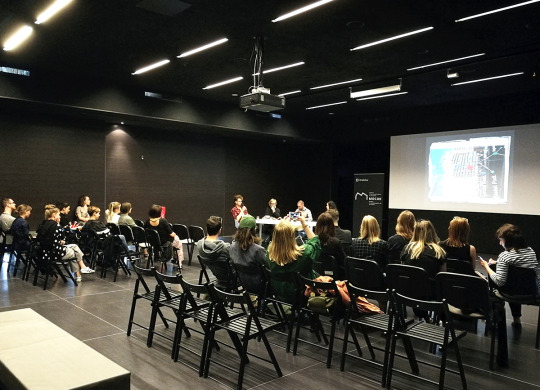
COLLABORATION NOW! SELF-PUBLISHING WORKSHOP
MOCAK, KRAKÓW, 30.05 – 02.06.19
Workshop …. Collaboration Now! International self-publishing workshop.. . is a unique formula designed for PAPERLUST Photobook Festival. As a participant you will gain basic knowledge about photobook creation from the scratch, including craft, design, editing and its function in the wider perspective of the art market. You will have a unique opportunity to work with internationally recognized artists from V4 region. Prepare for an intense experience where you will work in a group as well as directly with workshop leaders and other participating artists. You will progress by presenting your work, participating in round-table discussions and one-to-one sessions.
As a result every participant will create a dummy. This workshop will allow us to develop knowledge and consciousness about the medium of photography, photobooks, editing and narration and the use of visual language and self-expression through art. We believe visual is political and we intend to put it into the process. We will encourage emerging artists and amateurs (participants) to create visual stories, develop real skills and preserve the craft of producing a printed body of art, especially photobook.
Workshop leaders:
Katarzyna Ewa Legendź PBR| PL
Katarzyna Zolich PBR|PL
Leader from Hungary – Gábor Arion Kudász
Leader from Slovakia – Jan Sipocz
Leader from Czech Republic – Teresa Zelenkova
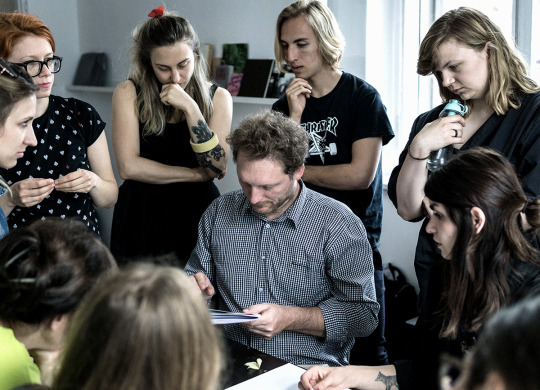
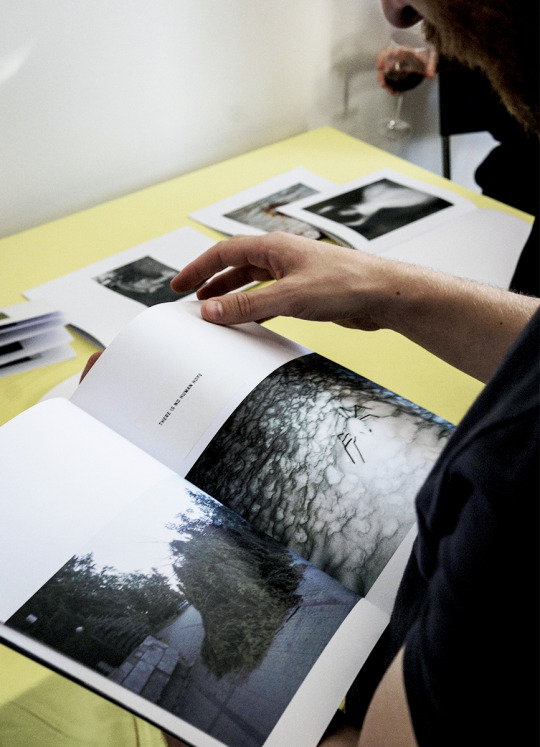
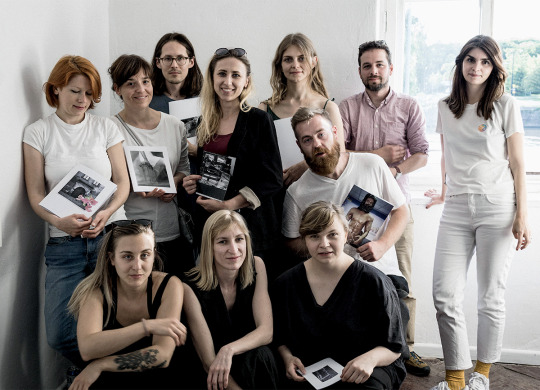
COLLABORATION NOW! SELF-PUBLISHING WORKSHOP
MOCAK, KRAKÓW, 30.05 – 02.06.19
Workshop …. Collaboration Now! International self-publishing workshop.. . is a unique formula designed for PAPERLUST Photobook Festival. As a participant you will gain basic knowledge about photobook creation from the scratch, including craft, design, editing and its function in the wider perspective of the art market. You will have a unique opportunity to work with internationally recognized artists from V4 region. Prepare for an intense experience where you will work in a group as well as directly with workshop leaders and other participating artists. You will progress by presenting your work, participating in round-table discussions and one-to-one sessions.
As a result every participant will create a dummy. This workshop will allow us to develop knowledge and consciousness about the medium of photography, photobooks, editing and narration and the use of visual language and self-expression through art. We believe visual is political and we intend to put it into the process. We will encourage emerging artists and amateurs (participants) to create visual stories, develop real skills and preserve the craft of producing a printed body of art, especially photobook.
Workshop leaders:
Katarzyna Ewa Legendź PBR| PL
Katarzyna Zolich PBR|PL
Leader from Hungary – Gábor Arion Kudász
Leader from Slovakia – Jan Sipocz
Leader from Czech Republic – Teresa Zelenkova
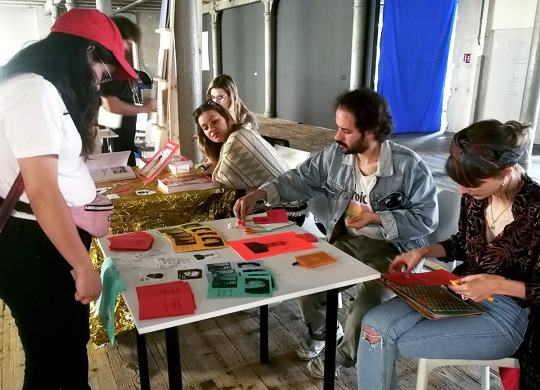

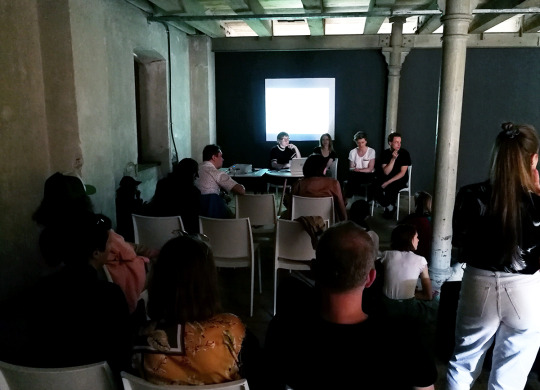
-----------
Organisers: Fresh From Poland Foundation, Paper Beats Rock Foundation
Strategic partners: FOTOGRAF Magazine (CZ), The Studio of Young Artists’ Association / FKSE (HU), ISBN könyv+galéria (HU), Hardness &Blackness (SK)
Programme curators: Katarzyna Legendź, Katarzyna Zolich
Exhibitions curators: Katarzyna Zolich, Katarzyna Legendź, Gosia Fricze, Grażyna Siedlecka, Katarzyna Roniek, Beata Istvánkó, Markéta Kinterová, Slavomíra Ondrušová
The project is co-financed by the Governments of Czechia, Hungary, Poland and Slovakia through Visegrad Grants from International Visegrad Fund. The mission of the fund is to advance ideas for sustainable regional cooperation in Central Europe.
#paperlustphotobookfest#welovepaper#paperlust#photobook#festival#art#photography#freshfrompoland#paperbeatsrock#mocak#visegrad fund#photomonth#fotograf#legendz#zolich#roniek#siedlecka#fricze#istvanko#kinterova#ondrusova#visegrad#book#artbooks#contemporary#zine#self-publishing#self-published
7 notes
·
View notes
Text
Rafael Lozano-Hemmer
This week’s lecture consisted of another online video that featured a talk from Mexican-Canadian artist Rafael Lozano-Hemmer. known for combining art, technology, and architecture, Rafael produces works based on the themes of identity and connection, often encouraging public interaction to serve as a contributor to the piece itself. In attempting to bring the public closer together, the artist creates these works that cannot exist without public participation whilst promoting the idea of giving everyday citizens a voice through his installations. One of the first pieces shown consisted of a massive project comprising of a set of spotlights placed in Mexico City, controlled by public participants through an online website. This allowed global contribution to the piece, receiving over 800,000 submissions whole. The light could be adjusted by command of the contributor, allowing the public to consistently change the formations of the lights over brief intervals of time. Following the project’s success, the display moved over to different cities over a number of years, each being as popular as the last.
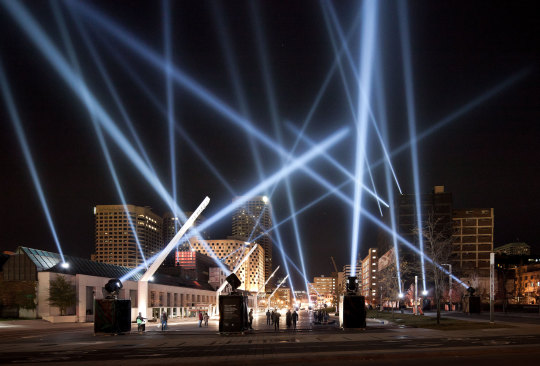
Another work that involved the contribution of the community which the artist spoke fondly about was his piece ‘Body Movies’. This piece included lights that project the shadows of the passing public in exploration of how people mis-use technology presented to them, relying on curiosity and the reactions of the local community to fulfil the purpose of the work. The project again turned out to be a success as the local crowds used these shadows to project their forms onto a giant wall. A lot of these interactions were humorous as random civilians interacted with one another through this ‘shadow play’ effectively achieving Rafael’s intentions of bringing people closer together. I particularly find it interesting how the artist solely relies on curiosity for this piece, as if it is guaranteed. I enjoy how his creative applications of technology to communal spaces produce intriguing explorations of human behaviour as well as how he selflessly considers the audience as part of his own practice and gives power to the viewer themselves.
The piece that stood out to me most consisted of a megaphone that converted audio into a beam of light. This piece was left unmoderated and uncensored to allow public individuals to speak into this megaphone from the site of a tragic massacre, as it converted their voiced opinions into a striking beam of light directed towards the nearby residency of a politician. This megaphone is not only creative in its concept but considerate in how it enables a platform for public expression as the words spoke into the megaphone were at the same time broadcast onto a specific radio station.
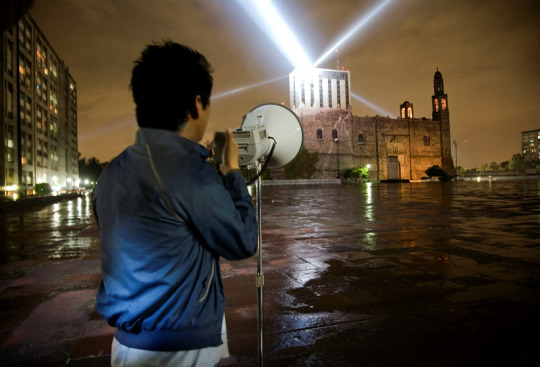
I was in awe at the idea of creating works that not only prioritise the public but exist without need of direct involvement of the artist. As mentioned, the selfless nature of Rafael highlighted his works as significant contributions to the art world. The levels of interaction that had been made available to the audience is praiseworthy. Although I do not think I could achieve the level of impact that this artist has had on his community, I aspire to create works that hold even a fraction of dexterity and significance as Hemmer’s. Since watching this video, his works have been stuck in my mind, I will continue to remember Rafael for the importance of his art and his ingenuity through deep consideration of audience involvement. I will also be further reviewing possible adaptations of my own practice to allow more viewer interaction, this is something I feel lacks in my work and could benefit the recognition of my ideas.
0 notes
Text
Landscaping Design Software For Mac Free Download

At my college, I teach a course named “Computers in Landscape Design” where I train landscape design students in AutoCad and Adobe Suite Programs, among others. These programs are tremendous for landscape designers who wish to use industry-standard software like regular landscape architects; however, they can be very expensive.
3d Landscape Design Software Free
Best Free Landscape Software Downloads
Students often do have access to free trials of the software, but for anyone interested in continually using them for the purposes of their professional business, eventually they will need to pay for the programs. To provide some perspective, currently the subscription for AutoCad software is around $200 per month. Unfortunately, this is just too expensive for many new business owners.

The most advanced landscape design software, for the most incredible landscape designs. VizTerra offers a streamlined interface, intuitive tools, and an extensive 3D library that makes it seamless to draw in 2D, transform your ideas into 3D, and then create a fully interactive 3D presentation to share with your clients — instantly. Home Designer Landscaping Software by Chief Architect (Paid) Chief Architect is one of the leading developers and publishers of 3D Architectural home design, and have also developed a software for landscape design that is just as up to par. This is often used by architects, interior designers, landscape designer and home designers, even DIYers. A free version of DreamPlan home design software is available for non-commercial use. If you will be using DreamPlan at home you can download the free version here. See more house design software screenshots.
Students often ask me if there are any free landscape design apps that work well for professionals. Over the past several years, I tested many free landscape design apps on various projects. In this article, I will review the pros and cons of the market’s five main free landscape design applications.
First, I won’t keep you guessing – my recommendation for the best free app is iScapes. The iScapes app is by far the best free landscape design app among its peers, having quality graphics, a solid user-interface, and a good plant library. In the table below, I provided a breakdown of some of my ratings for each of the five design apps. In case the image is too small, click here to download the pdf version. I will provide some helpful insights of each app in the sections that follow, along with some common issues that may influence your decision before downloading. But before you head off and just download the iScapes or PROLandscape app, I want to give you a little piece of wisdom I’ve accrued over my years of design. There is no substitute for a poor knowledge of landscape plants or design. If you are new to gardening or landscape design, before you purchase any app, I would highly suggest picking up a copy of The Essential Garden Design Workbook along with some essential drafting supplies and learn the old-fashioned way. Not only will it be fun, but you will be a better designer by doing this.
Okay, that’s my word of warning – now onto the reviews
Finally – before I diveinto each application – I must state that noneof these free programs compare to the professional industry standards ofAutoCad, Vectorworks, PROLandscape, or Dynascape. Although these programs dohave some good features – they just simply cannot match the quality of theprofessional software. But for those designers that are looking for a cheapoption that can get the job done, some are worth checking out.
iScapes (Rating: 16/20 )
The iScapes software offers a free and paid premium subscription service. The paid service offers a larger plant library, along with additional image downloads, and project archives; however, the free version is very useful for a beginner landscaper or do-it-yourselfer. The biggest disadvantage of the app is that it is currently only available for iPhone or iPads. For Android users, they will need to find a substitute. To try iScapes, click here.
Pros: The biggest advantage of this app is the graphic quality of the three dimensional landscape elements. The drag and drop interface, along with the visual characteristics of the app make it very useful to professionals doing quick designs for clients on-site.
Cons: As with most of the apps you will see on the list, the major disadvantage is that if you want additional quality add-ons, you will need to pay. A more extensive plant library, along with additional project storage is available with payment.
Home Outside (Rating: 10/20)
I originally had high hopes for the Home Outside app, as the average app review was 3.8/5.0 with many positive comments. After having used the app in many different types of projects, I was disappointed in the lack of three-dimensional perspectives and the limited plant library. To test out the software, click here.
Pros: For plan graphics, the renderings are quite nice and the app allows for the importing of google maps of your customer’s property.
Cons: The biggest downside to the app is the lack of any real plant library. The plants are categorized by “tree” or “shrubs” with no indication or availability to specify the planting in the free version. The paid version does offer some extra features.
Home Design 3D (Rating: 5/20)
Home Design 3D was an intriguing app that had very distinctive reviews when I originally had downloaded it. People seemed to either love it, or hate it. Unfortunately, I was one of the latter. The app is very useful for interior planning and design, but falls short for any realistic landscape design applications. To try the app, click here.
Pros: The only thing the app has working for it is the 3D aspect. The three-dimensional rendering capabilities are better than I would have expected for a free app.
Cons: The user-interface is very poor and the app itself is not intuitive. This combination makes for a very difficult experience for a designer, especially when there are other options available. I would hope that future updates provide pop-ups or a tutorial at the beginning to help designers navigate the platform prior to starting a design.
PROLandscape Home (Rating: 5/20)
I will start off with a disclaimer. In one of my classes, I train designers on the PROLandscape Professional Softwares (Planner, ImageEditor, and Proposal). These are good (but expensive) programs that are very useful for design. I believe it is a great marketing strategy by the developer Drafix to provide this free app to showcase some of the basic features of their paid programs.
With that being said, I found it difficult to provide an honest review of the free version because I kept remembering the full functionality of the paid programs. In any case, I did my best to realistically provide good feedback on the user-interface. Overall, there are many elements that can be improved. To test this out app, click here.
Pros: The free software has many similarities with the overlay perspectives of Home Outside, but with a greater plant library. The biggest drawback of the software is that most of the plant database is only offered for the paid version.
Cons: The app is not very intuitive and there is very little within the program to provide help or support. Also, there is a limited availability of plants, with poor customization, and relatively no ability to modify the existing library.
Sketchup Viewer (Rating: 5/20)
I had originally downloaded the Sketchup Viewer because I had received a recommendation about the app from another designer. I already have extensive knowledge in Sketchup, along with a variety of other 3D Software programs including three-dimensional CAD, Rhino, and Revitt, so I figured the Sketchup Viewer was worth a try. In general, it was a big disappointment as the viewer does not really offer anything valuable for a designer that does not have access to the base-program of Sketchup. To test out the viewer, click here.
Pros: If you have the ability to work on a regular computer to complete a great 3D model in Sketchup, the Viewer is useful -essentially just a tool to view the model and show it to your client on site. Other than that, the viewer does little else.
3d Landscape Design Software Free
Cons: It is not a design software and offers no specific landscape capabilities. The app is obsolete without actually using Sketchup to generate the landscape model.
Final Thoughts
If you are looking for the best free landscape design apps that also offer some assistance in designing and showcasing designs to clients in a professional manner, then I would recommend iScapes. If you do not have an iPhone or iPad, use Home Outside.
None of the free apps have great functionality when compared to their paid counterparts. If you are starting out in the design profession, the free apps might be worth exploring but you will quickly find better value from some of the other paid alternatives.
If you haven’t already – check out my article on Gift Ideas for Landscape Designers – you can use the money you’ve saved on some nice things for a fellow gardener, or yourself.
Best Free Landscape Software Downloads
For more articles on Landscape Design, please be sure to check out our Design resources and landscape Business articles.
____________________________________
ImportantLegal Disclaimer: This site is owned and operated byDraftscapes. We are a participant in affiliate marketing programs designed toprovide a means for sites to earn advertising fees by linking to participantvendors. Affiliations include Utrecht Art Supply and Amazon Associates.Draftscapes is compensated for referring traffic and business to thesecompanies. Recommendations for products or services on this site are not influencedthrough the affiliation.

0 notes
Text
AI like HAL 9000 can never exist because real emotions aren't programmable
by Guillaume Thierry

HAL 9000 is one of the best-known artificial intelligence characters of modern film. This superior form of sentient computer embarks on a mission to Jupiter, along with a human crew, in Stanley Kubrick’s iconic film 2001: A Space Odyssey, which is currently celebrating its 50th year since release.
HAL is capable of speech production and comprehension, facial recognition, lip reading – and playing chess. Its superior computational ability is boosted by uniquely human traits, too. It can interpret emotional behavior, reason and appreciate art.
By giving HAL emotions, writer Arthur C. Clarke and filmmaker Stanley Kubrick made it one of the most human-like fictional technologies ever created. In one of the most beautiful scenes in sci-fi history, it says it is “afraid” when mission commander Dr. David Bowman starts disconnecting its memory modules following a series of murderous events.
youtube
HAL is programmed to deliver optimal assistance to the crew of the spaceship Discovery. It has control over the entire vessel, and staggering intelligence to aid it in its task. Yet soon after we become acquainted with HAL, we cannot help feeling that it is worried – it even claims it is experiencing fear – and that it has an ability to empathise, however small. But while there is nothing to preclude the idea that such an emotional AI could see the light of day, if such depth of feelings were to be included in real world technology, they would have to be entirely fake.
A ‘perfect’ AI
When, during the film, Bowman starts to manually override HAL’s functions, it asks him to stop, and after we witness a fascinating obliteration of HAL’s “mental” faculties, the AI seemingly tries to comfort itself by singing Daisy Bell – reportedly the first ever song produced by a computer.
youtube
In fact, viewers begin to feel that Bowman is killing HAL. The disconnection feels like a vengeful termination, after witnessing the film’s earlier events. But though HAL makes emotional statements, a real-world AI would certainly be limited to having only the ability to reason, and make decisions. The cold, hard truth is that – despite what computer scientists say – we will never be able to program emotions in the way HAL’s fictional creators did because we do not understand them. Psychologists and neuroscientists are certainly trying to learn how emotions interact with cognition, but still, they remain a mystery.
Take our own research, for example. In a study conducted with Chinese-English bilinguals, we explored how the emotional value of words can change unconscious mental operation. When we presented our participants with positive and neutral words, such as “holiday” or “tree”, they unconsciously retrieved these word forms in Chinese. But when the words had a negative meaning, such as “murder” or “rape”, their brain blocked access to their mother tongue – without their knowledge.
Reason and emotion
On the other hand, we know a lot about reasoning. We can describe how we come to rational decisions, write rules and turn these rules into process and code. Yet emotions are a mysterious evolutionary legacy. Their source is the source of everything, and not simply an attribute of the mind that can be implemented by design. To program something, you not only need to know how it works, you need to know what the objective is. Reason has objectives, emotions don’t.
In an experiment conducted in 2015, we were able to put this to the test. We asked native speakers of Mandarin Chinese studying at Bangor University to play a game of chance for money. In each round, they had to take or leave a proposed bet shown on the screen – for example, a 50% chance of winning 20 points, and a 50% chance of losing 100 points.
We hypothesized that giving them feedback in their mother tongue would be more emotional to them and so lead them to behave differently, compared to when they received feedback in their second language, English. Indeed, when they received positive feedback in native Chinese, they were 10% more likely to take a bet in the next round, irrespective of risk. This shows that emotions influence reasoning.
Going back to AI, as emotions cannot be truly implemented in a program – no matter how sophisticated it may be – the reasoning of the computer can never be changed by its feelings.
One possible interpretation of HAL’s strange “emotional” behavior is that it was programmed to simulate emotions in extreme situations, where it would need to manipulate humans not on the basis of reasoning but by calling upon their emotional self, when human reason fails. This is the only way I can see that real-world AI could convincingly simulate emotions in such circumstances.
In my opinion, we will not, ever, build a machine that feels, hopes, is scared, or happy. And because that is an absolute prerequisite to any claim that we have engendered artificial general intelligence, we will never create an artificial mind outside life.

This is precisely where the magic of 2001: A Space Odyssey lies. For a moment, we are led to believe the impossible, that pure science fiction can override the facts of the world we live in.
Guillaume Thierry is Professor of Cognitive Neuroscience, Bangor University
This article was originally published on The Conversation.
#movies#science fiction#Featured#scifi movies#2001: A Space Odyssey#Stanley Kubrick#artificial intelligence#technology#technopolitics#hal 9000
13 notes
·
View notes
Text
Screenplayology glossary
Act — As defined by Robert McKee, “An ACT is a series of sequences that peaks in a climactic scene which causes a major reversal of values, more powerful in its impact than any previous sequence or scene.”1 The apparent precision of McKee’s definition, however, belies the fact that the “Act,” as understood in terms of traditional three-act screenplay structure (which has itself been called into question)2, is a notoriously fuzzy concept with disputed boundaries. In theater an act is a narrative segment of some length that concludes with an act break, but most feature-length screenplays do not contain act breaks.
Action — Action, in the sense in which it matters to those who study the screenplay, is a concept strongly tied to both Aristotle’s views of the primacy of plot over character in drama and the old adage that screenwriters should “show not tell.” While the screenwriter’s craft is one of narration (diegesis), his/her art points toward another form, the feature film, which is a craft of performance (mimesis). Characters, then, are not known to the audience by their thoughts or feelings but by their actions. For this reason, the craft of screenwriting — more than its prose counterparts — relies heavily on carefully constructed actions. Likewise, screenplays that contain more action (in the broader sense of active protagonists participating in their own destiny) tend to be more commercial and accessible to audiences than those with minimal action (again, in the broader sense of passive protagonists reluctant to participate in their own destiny). Action is also the term for the main scene text that reports on character actions and contains scene descriptions, technical comments, and other relevant story details.
Ancillaries — A film business term that refers to all financial revenues not stemming from theatrical box office. These include home video, television, and merchandising.
Antagonist — Not simply a villain, the Antagonist is the dramatic force that obstructs the Protagonist from obtaining his or her desire. In a Romantic Comedy, for instance, the Antagonist may be a rival suitor (traditional villain role) or she may be the object of affection who must be won over by the Protagonist.
A Priori Method — Janet Staiger defines this method of genre classification as follows: “make an a priori declaration of the characteristics of the group.”3
Arbitration — A process within the WGA in which disputes over screen credit are settled in a binding decision of objective parties.
Archetype — A character form that fulfills a certain universal dramatic or psychological function within a narrative. May be best understood as a functional “mask” worn by the character, as a character may wear the masks of multiple Archetypes throughout the story, and more than one character can wear the same mask. “Mentor” and “Herald” are just two common Archetypes. Not to be confused with a stereotype.
Authors linked by “&” — In formal WGA screen credit rules, authors linked by an ampersand are understood to be team writers or willing collaborators.
Authors linked by “and” — In formal WGA screen credit rules, authors linked by the word “and” are understood to be successive or independent co-writers or re-writers who did not collaborate together on a single draft.
Auteur Theory — A broad and complex theory for the critical analysis of film. However, for the purposes of screenplay studies, it will suffice to say that Auteur Theory proposes that the director is the “author” of the film.
Beat (in scene structure) — In terminology borrowed from music, emotional beats mark the dramatic rhythm of a scene. “A BEAT is an exchange of behavior in action/reaction. Beat by Beat these changing behaviors shape the turning of a scene,” writes McKee4, while Judith Weston writes, “The ‘beat changes’ are simple changes of subject.”5 Whatever strict definition is accepted, breaking a scene into smaller dramatic moments allows directors and actors to map the emotional arc of a scene for a more thoughtful performance. One can also refer to a visual beat, which is more or less synonymous with the shot. By breaking an action down into visual beats, a director can determine what shots he or she will need in order to build the scene through montage.
Beat (in script terminology) — You will sometimes see “(Beat)” as a parenthetical comment in a block of dialogue text. In this case, the screenwriter is instructing the actor to “take a beat” — i.e. pause — before continuing with his or her speech.
Beat Breakdown — The process by which a scene analyst (usually a director or performer) maps a particular scene for all its dramatic beats.
Beginning — “A beginning is that which does not itself follow anything by causal necessity, but after which something naturally is or comes to be.”6 As obvious as Aristotle’s definition may be, many overlook its implications for narrative self-containment.
Blocking — The staging of the actors in the scene.
Blueprint Stage — The stage of readership at which the screenplay serves its intended purpose, instructing a crew of artists and technicians in the shaping of a feature film. As Claudia Sternberg writes, “The blueprint is the classic metaphor used to characterize the function and the significance of the screenplay during the production process.”7
Bone Structure — Lajos Egri’s terminology for the physiological, psychological, and sociological makeup of a character, what Robert McKee might call “Characterization.”
Catharsis — An oft misunderstood and misrepresented concept from Aristotle’s Poetics, Catharsis has possibly been given more consideration in the study of dramatic narrative than perhaps Aristotle intended. Variably translated as “purification” or “purgation,” Catharsis is probably best understood as the release of excess emotion that some viewers experience when observing a tragic performance. It is important to understand that Catharsis is not the catch-all purpose of drama for Aristotle that some would have you believe. It is rather one possible benefit for those people who suffer from excess emotion.8
Central Producer System — A system of management in the Hollywood mode of production. In the Central Producer System, creative power shifted from directors to a central producer who used the continuity script to control production activity.
Chain of title — Establishes the sequential history of ownership transfers for a particular property, in this case a screenplay.
Character — “Character can be succinctly defined as storyworld participants.”9 This definition, while succinct, doesn’t offer much in the way of precision. “TRUE CHARACTER,” writes McKee, “is revealed in the choices a human being makes under pressure,”10 or as Mamet puts it, “They always talk about the character out there in Hollywood, and the fact is there is no such thing. It doesn’t exist. The character is just habitual action. ‘Character’ is exactly what the person literally does in pursuit of the superobjective.”11 This abstract understanding of character as action is sacrosanct among screenwriters but difficult to process from an analytical perspective. For broader purposes, a character can be defined as a non-actual storyworld existent who causes or experiences change through dramatic action.
Character Arc — The change experienced by a character within a given narrative discourse.
Characterization — Defined by McKee as “the sum of all observable qualities of a human being, everything knowable through careful scrutiny,”12 characterization is synonymous with what Lajos Egri terms “bone structure,” or a character’s physiological, sociological, and psychological makeup.13 While Mamet and McKee minimize the relevance of characterization in favor of action, Egri argues that an understanding of the whole person is essential to determining the motivations behind actions. “Without knowledge of these three dimensions we cannot appraise a human being.”14
Climax — Climax seems to be a term that has fallen out of favor with the leading screenwriting gurus. Syd Field refers to it only tangentially in his Screenplay: the Foundations of Screenwriting, and David Trottier prefers the somewhat sillier term, “the showdown” in his Screenwriter’s Bible.15 McKee discusses the climax but doesn’t much define it except to say that it “brings about absolute and irreversible change.”16 In her four equal parts conception of screenplay structure, Kristin Thompson refers to the fourth act as the climax, in which “the action shifts into a straightforward progress toward the final resolution, typically building steadily toward a concentrated sequence of high action.”17 Interestingly, this “concentrated sequence of high action” comes closest to the traditional understanding of climax in classical dramatic structure: that of highest tension in a narrative. Writes Gustav Freytag: “the climax . . . is the most important place of the structure; the action rises to this; the action falls away from this.”18
Color pages — Revised pages of a shooting script are printed on colored sheets of paper during production in order to track changes.
Complication — Defined by Aristotle as “everything from the beginning up to and including the section which immediately precedes the change to good fortune or bad fortune,” complication is the steady build of dramatic tension to the point of climax and resolution.19 In many screenplays, it often takes the form of a series of solutions to problems that only beget larger problems until the final solution is found (e.g. In Jurassic Park, resetting the park’s electrical systems has the unintended consequence of setting the raptors free, which makes matters worse).
Conflict — The straight forward clash of desires and obstacles, dramatic conflict is the essential ingredient of narrative. Conflict can come in the form of an external desire blocked by an external obstacle (e.g. humanity’s need to overcome an alien enemy in Independence Day) or an internal desire blocked only by the neurosis of the self (e.g. Charlie Kaufman’s need to evolve beyond his own self-condemnation in Adaptation).
Confrontation — The second act in Syd Field’s Paradigm, its ideal length is approximately 60 pages, and it contains both the second Plot Point at or around page 85 and the screenplay’s Mid-Point at or around page 60, or half-way through the script. 20
Consider — The “maybe” grade in studio script coverage.
Content — “Film content,” writes Margaret Mehring, “is what the screenwriter wants to say and the structure within which it is said. It’s the story to be told, the characters to be met, the places to go, and the theme to be communicated.”21 A nebulous concept usually discussed in dichotomy with form, content refers to the “what” that is transmitted by the “how.” In other words, a screenplay may be said to contain virtually identical content with the motion picture produced from that screenplay, but the script and the film transmit this information through drastically different forms: the script through language typed onto paper, the film through images exposed onto celluloid. Of course, this raises questions as to whether two such forms really share the same content at all, since both the screenplay and the movie will no doubt contain an excess of information exclusive to its particular form (for instance, language metaphors in the screenplay and human performances in the movie).
Continuity (in film production) — In film production, the script supervisor is in charge of tracking continuity from shot to shot and take to take. In this sense, continuity is the illusion that a motion picture presents a single cohesive reality rather than a series of differing performances cobbled together in the editing room. The script supervisor will track gestures, facial expressions, prop placement, the condition of wardrobe and hair, and numerous other factors to ensure the illusion of continuity.
Continuity Script — A precursor to the contemporary screenplay. This early shootings script was invented by Thomas Harper Ince in the 1910s as the first form of scripting capable of governing both visual continuity and budgetary fidelity.
Controlling Idea — According to Robert McKee, “A CONTROLLING IDEA may be expressed in a single sentence describing how and why life undergoes change from one condition of existence at the beginning to another at the end.”22 It builds on Lajos Egri’s concept of the Premise and adds an if, when, or because to it. (e.g. Great love conquers even death WHEN lovers sacrifice their own self-interest.)
Copyright — An author’s rights of ownership, i.e. the right to copy, sell, and distribute a work of art. When screenwriters sell their works, they also sell their copyright to the studio that purchases said script. This is in contrast to novelists who retain their copyright, even when a publisher purchases the manuscript.
Coverage — A system of screenplay evaluation within the studio system. Screenplays are read, summarized, and critiqued, often graded on such elements as plot and dialogue, and given a final determination of pass (rejection), consider, or recommend.
Dénouement — While literally translated as “unraveling the knot,” denouement is best understood by contemporary readers as the tying up of loose ends in the plot. In classical five-part story structure, this follows the falling action. The brief epilogue described by McKee23 and Thompson24 in their respective plot models for screenwriting is a good example of the denouement (e.g. at the end of Back to the Future, Marty wakes up to discover that the lives of everyone in his family have improved as a result of his time-traveling adventures).
Description — One of Claudia Sternberg’s five modes of presentation in the scene text of the screenplay, description “is comprised of detailed sections about production design in addition to economical slug-line reductions.”25 It may also be understood as the filmable imagery contained within the scene text.
Development — The first stage of industrial movie-making, development precedes pre-production. During this stage, a script may go through multiple re-writes and screenwriter re-assignments before a studio feel comfortable committing to the project.
Dialogue — The lines in the script intended to be spoken by the actors.
Discourse Time — The duration of the telling of a story. In the case of a feature film, its running time. In the case of a screenplay, the time it takes a person to read it.
Elements (in production breakdown) — In a production breakdown, a script is thoroughly read and labeled for such elements as cast members, props, set designs, costumes, animals, etc. An element, then, is any unique factor that might affect the budget of a feature film.
Elements (in script evaluation) — In studio script coverage, a reader will often track specific characteristics that might make the film more marketable. These are sometimes referred to as elements.
Elevator Pitch — A 30-second story pitch.
Emotional Display — The term Claudia Sternberg uses to identify a “spontaneous physical expression for momentary psychological moods,” or non-verbal behavioral cues that exhibit only temporary emotional states.26
Empiricist Method — Janet Staiger defines this method of genre classification as follows: “determine from empirical observation the necessary and sufficient characteristics to include a film in the category.”3
End — “An end . . . is that which itself naturally follows some other thing, either by necessity, or as a rule, but has nothing following it.”28
Event — A moment in which change takes place. This may take the form of an internal event, in which the protagonist experiences a change in desire or disposition, or it may take the form of an external event, in which the protagonist experiences a change in fortune. Either way, there can be no event without change.
Exposition — Syd Field defines exposition as “the information needed to move the story forward.”29 Robert McKee seems to echo Field: “Exposition means facts — the information about setting, biography, and characterization that the audience needs to know to follow and comprehend the events of the story.”30
EXT. — The abbreviation for “exterior” in the slug-line of a scene, meaning that the scene is set outside. This usually means the scene will also be shot outside, though it is entirely possible that the scene will be shot on a stage dressed to look like an exterior location.
External Focalization — In external focalization, narrative information is limited to a heterodiegetic narrator’s perception and excludes internal observations or states of mind.
Externalizer — The term Claudia Sternberg uses to identify “information about stable dispositions, opinions, attitudes, features and interpersonal relations beyond their temporary state,” or non-verbal behavioral cues that exhibit permanent emotional states.31
Fabula — Coined by Russian formalists, fabula is a term sometimes used in narratology to describe the raw facts and events of the storyworld of a given narrative as understood in chronological order, or the unplotted story. When engaging a narrative, particularly one that is non-linear, audiences mentally re-arrange the facts and events of the narrative as presented in the sjuzhet to fabricate a fabula in their imaginations and therefore understand the chronology of the narrative.
Filmic Composition Device (FCD) — A term coined by Manfred Jahn to define the narrating agent of a motion picture. If the narrating agent of an oral story is the narrating storyteller, then the narrating agent of a motion picture is everything that makes up a motion picture: the camera, the soundtrack, the performances, the editing, etc. The FCD is the hypothetical narrator comprised of all these elements.
Focalization — Limits the narrative information available to the reader through the perceptions of a focalizer or reflector. The reflector may be the narrator or a character in the narrative.
Form — Form, in contrast to content, is the term we use to single out the distinct attributes of a given narrative medium, the “how” that transmits the “what” of content. “Film form,” writes Margaret Mehring, “articulates the uniqueness of the motion picture medium — the moving and audible image.”32 The screenplay is unique in that it is a literary form that both points toward and defers to another medium, that of the motion picture. The screenwriter must evoke the “moving and audible image” of film form through typed words.
Formalized Non-Verbal Behavior — In contrast to naturalistic non-verbal behavior, formalized non-verbal behavior is “the use of unnatural, exaggerated body language” for dramatic or comedic effect.33
Genre — A loose set of formal, tonal, or thematic conventions used for categorizing narrative works of art, including screenplays.
Hamartia — Long mistranslated as the “tragic flaw” that illustrates a particular character’s moral defect, it is better understood as a simple miscalculation, literally “missing the mark.” Aristotle argues that the most effective tragedy results from a good character’s error in judgment.
Haptics — Non-verbal communication through touch behavior.
Hero’s Journey — A common description of Joseph Campbell’s monomyth cycle.
Idealist Method — Janet Staiger defines this method of genre classification as follows: “find a film and judge other films against the pattern and conventions in that film.”3
Imagery — May refer to either word symbols or picture symbols that appear in the screenplay. Screenwriters can evoke non-filmable imagery through use of such literary tropes as simile and metaphor in their writing. While these images may enrich the reading experience, they will be lost in the motion picture. On the other hand, screenwriters can also create literal images with multiple levels of meaning (e.g. in sex, lies and videotape, Graham’s one key represents his inability to commit and become intimate with another person).
Information Dump — The act of inserting chunks of exposition unnaturally into dialogue without dramatic motivation.
INT. — The abbreviation for “interior” in the slug-line of a scene, meaning that the scene is set inside.
Internal Focalization — In internal focalization (sometimes called “character-bound” focalization), narrative information is limited to the perceptions of story-internal reflectors (including homodiegetic narrators). Internal focalization may grant the reader access to a reflector’s online perceptions (what is presently observed through the senses) or offline perceptions (dreams, memories, and hallucinations).
Iteration — an event that occurs multiple times in story time but is delivered only once in the discourse, with the one example standing in for the pattern.
Kinesics — Non-verbal communication through body language and facial expressions, including gestures, glance, and eye contact.
Leave-behind — A document created by a writer as a companion to a formal pitch, usually including at least a brief synopsis of the pitched story.
Linear — Presented in chronological order.
Literary Comment — “Passages or parts of sentences which explain, interpret or add to the clearly visible and audible elements of the screenplay” through such non-filmable images as simile and metaphor.35
Logline — A one sentence screenplay pitch that boils down the plot to its most essential elements.
Magnitude — A somewhat archaic concept from Aristotle, it nevertheless has useful implications for the screenwriter. Aristotle argued that in order for something to be beautiful it could neither be too small (since it would be imperceptible) nor too large (since one could not take in the whole). Anyone who has seen a photograph taken through an electron microscope or seen documentary footage of the blue whale knows this is nonsense. However, the spirit of Aristotle’s argument remains alive today. A screenwriter needs to carefully consider the magnitude of his narrative. While some epic scripts need to exceed 120 pages, most screenplays will benefit from cutting excessive pages. A screenwriter must keep a sober mind when evaluating the magnitude of his or her screenplay.
Master scene format — The standard screenwriting format in Hollywood, it eschews shot-by-shot details in favor of telling the story from the perspective of the master shot.
Middle — “. . . that which follows something as some other thing follows it.”36 It is important to note that the beginning, middle, and end of a narrative (sjuzhet) is not necessarily synonymous with the beginning, middle, and end of the story being narrated (fabula). In fact, it is often best to begin the narrative in media res — “into the middle” — of the story.
Mid-Point — In Syd Field’s Paradigm, the Mid-Point is an important scene that usually takes place half-way through the screenplay (about page 60), which of course, is also the half-way point of Act II. In fact, Field never really defines the mid-point with much detail except to say that it connects the two halves of the lengthy second act. “How that link differs from all the other links that make up the dramatic chain of events remains unclear,” writes Kristin Thompson in her critique of the three-act Paradigm. In response to this lack of clarity, Thompson posits her Four Large-Scale Parts structure model, in which Field’s Mid-Point becomes the major turning point between the complicating action and the development.37
Mise-en-scene — “Setting into the scene.” Involves the placement of all elements before the camera, including staging of the actors, choice of locations, production design, lighting, wardrobe, and makeup.
Monomyth — Joseph Campbell’s description of the common mythological story cycle he perceived to be universally present in the sacred narratives of every human tradition.
Montage (in editing theory) — Combining two uninflected images through editing to create meaning.
Montage (in script terminology) — More or less interchangeable with the term “SERIES OF SHOTS,” a montage indicates a sequence of brief shots expressing some idea (for instance, the passage of time), usually set to music. At one time, the “MONTAGE” cue was distinct from the “SERIES OF SHOTS” cut, in that montage indicated several images superimposed on one another simultaneously, such as in the opening of Apocalypse Now, but this convention is no longer observed.38
Motion — The quintessential characteristic of film form is motion: the movement of the celluloid strip through the camera gate in analog film production; the movement of the camera (panning, tilting, booming, dollying, trucking, craning, and the free-form movements of the handheld or steadicam shot); the movement of the actors through the set, as well as their gestures and eye movements; and the movement of the spectator’s eye as he shifts his gaze from one object of interest in the composition to another. Screenwriters can evoke such motion through explicit or implicit cues.
Motivation — Refers to a character’s objective or need. If an actor does not understand why the script calls for a certain behavior from his character, he may ask the director for his “motivation,” the objective or need that drives the character to the action in question.
MOS — A take without sound. No one knows for sure where the abbreviation originated, but legend attributes it to a German director whose broken English enunciated the phrase “mit out sound.”
Narrative — A series of logically and chronologically related events caused or experienced by characters and presented as a whole, unified action.
Narrative Cinema — Motion pictures that adhere to the rules of narrative logic (as opposed to experimental or avant garde cinema).
Narratology — The academic study of narrative structures.
Narration — The presentation of a narrative. Narration may be understood in two different senses. In the broader sense, all narratives are presented, and therefore, all narratives are narrated. In a more specific sense, narration (diegesis) may be understood as the literal telling of a story by a specific narrator (such as with an oral story or a novel), in contrast to performance (mimesis), which is the process of showing a story by acting it out.
Narrator — The person, group, or device that narrates. Narrators may be homodiegetic (participants in the events being narrated) or heterodiegetic (non-participants in the events being narrated). In motion pictures, the narrator is the entire industrial apparatus of feature filmmaking: the edited image and soundtrack.
Naturalistic Non-Verbal Behavior — In contrast to formalized non-verbal behaviors, naturalistic non-verbal behaviors “strive for authenticity” in their rendering.39 This is especially consequential when a screenwriter tackles another ethnic or culture group whose customs must be meticulously studied for verisimilitude.
Non-linear — Presented out of chronological order.
Non-narrative Cinema — Motion pictures that do not adhere to the rules of narrative logic (such experimental or avant garde cinema).
Non-recurring phenomenon — William Goldman’s term for a financially successful feature whose success cannot be explained by predictable Hollywood marketing logic. “What it means, of course, is this: It was a freak, a fluke, a once-in-a-lifetime occurance.”40 A non-recurring phenomenon is typically a character-driven, slice-of-life film, often with smaller stars in the lead roles.
Non-verbal behavior — Includes every element of body language as a method of communication, including kinesics, haptics, and proxemics.
Objective — What a character hopes to accomplish.
Obstacle — Anything blocking a character from achieving his or her objective.
Option — When a studio buys an option on a screenplay, they are basically calling dibs, reserving the right to purchase the screenplay in-full at a later date. This allows them to make a small investment in the picture as they determine the feasibility of the project. Options typically last for one to two years. If the studio does not exercise their option in that time frame, the option expires, and the writer is free to sell the screenplay to a rival studio.
O.S. — Dialogue that is spoken off screen by a character present at the current location. Also sometimes “O.C.” for off camera.
Package — When agents use their considerable clout to attach stars (and sometimes a director) to a particular screenplay before it has been greenlit.
Package-Unit System — A system of management in the Hollywood mode of production. After the collapse of the studios, creative and budgetary power over individual productions shifted away from a central producer to freelance producers. Each producer needed to put together a package in order to produce the film.
Paradigm — Syd Field’s three-act model for screenplay structure at 1/4 – 1/2 – 1/4 proportions.
Parenthetical Direction — Dialogue cues that offer clarification of a line reading. These are usually unnecessary and often ignored by actors.
Pass — A “no” grade in studio script coverage, as in “we’re going to pass on this script.”
Pay-Off — The answer to a set-up. Because screenwriting is a craft of economy, readers will assume that any seemingly extraneous information planted by the screenwriter is in fact an important plot seed that will be developed later in the script. If the thread is never followed, the reader will likely be disappointed.
Perspective — The point-of-view of a given narrative or narrative sequence, as in “through whose eyes and mental capacity will we view this event?“
Pitch — A sales summary of a screenplay’s story, usually spoken in a limited time-frame.
Plot — Primarily the sequencing and organization of a story’s events.
Plot Point — In Syd Field’s three-act structure Paradigm, a “Plot Point is defined as any incident, episode, or event that hooks into the action and spins it around in another direction,”41 or essentially what Aristotle called reversals. According to Field, each screenplay must have two plot points, one near the end of Act I and one near the end of Act II.
POV — A point-of-view shot, or a camera angle that presents the frame of view from the first-person perspective of one of the film’s characters.
Premise — Lajos Egri’s term for a particular formation of the theme. For Egri, the Premise is the screenplay’s purpose, its reason for being written. The writer writes because he hopes to prove something to be true through dramatic action. For this reason, we will define Premise as a statement of belief about what will result from a particular Universal Value placed into conflict.
Production Breakdown — The Production Manager reads through the shooting script, highlighting all of its important elements, and categorizes each of those elements by scene. This is the first step in both the scheduling and budgeting of a feature film.
Property Stage — The first stage of readership for the screenplay, during which studio executives, story editors, and agents all evaluate “its qualities as a property or commodity and its saleability.”42
Protagonist — The primary and central character of a narrative, its driving force, and the person with whom the audience usually shares the most empathy as he or she sets out to achieve a particular objective.
Proxemics — Non-verbal behavior related to spatial relationships.
Rainbow Script — A shooting script with lots of revised pages.
Reading Material Stage — The final stage of readership for the screenplay, after it has outlived its usefulness as a production document. Here it belongs to the casual or scholarly reader to be enjoyed or analyzed as a piece of literature.
Recognition — “. . . as the name indicates, is a change from ignorance to knowledge,” writes Aristotle,43 or more specifically, the moment(s) in the screenplay in which a character learns a pivotal piece of information that reverses his or her path of action.
Recommend — The best grade in studio script coverage.
Reflector — Or focalizer: the focalizing agent of a narrative, or the character/narrator whose perspective anchors and limits the narration.
Rehearsal Method — Judith Weston’s approach to script analysis.44
Release Script — The Release Script has changes that reflect the final version of the movie (for instance ad libbed lines, added or omitted scenes, etc.).
Repetition — An event that occurs only once in story time that is delivered multiple times in discourse time, usually from different perspectives with new information conveyed each time.
Report — One of Claudia Sternberg’s five modes of presentation in the scene text of the screenplay, report is the active mode of the screenplay and “is typified by events and their temporal sequence and generally centers on the actions of human beings.”45
Resolution — The word “Resolution” is used by different writers in different ways. In Syd Field’s Paradigm, it is the entire third act. For Robert McKee, on the other hand, Resolution “is any material left after the Climax”46 of the third act and refers to the brief (two-page) epilogue at the end of the screenplay. Aristotle defines the Resolution as “everything from the beginning of the change of fortune to the end.”47 For our purposes, it will suffice to agree that Resolution calls for the problems of the plot to be resolved at the end of the dramatic action.
Result-Oriented Direction — Directing an actor with adjectives instead of verbs. In most cases, directing an actor to be angry at a given moment will result in the actor forcing a false emotion through exaggerated expressions. Most actors prefer direction that gives them something to do rather than something to feel. Result-oriented direction should be avoided wherever possible. This relates to screenwriting in that most parenthetical dialogue directions have the same effect as result-oriented direction and should be avoided unless absolutely necessary.
Reversal — “. . . is a change by which the action veers round to its opposite, subject always to our rule of probability or necessity.”48 Dramatic action is built on reversals of fortune for the protagonist as he encounters obstacles that thwart his objective.
Scenario – An early form of script used as a narrative guide during the silent era of cinema. The scenario was typified as a list of shots, with each shot covering an entire scene.
Scripting – Writing for the screen.
Script Supervisor — Tracks continuity and coverage during feature film production.
“Screenplay by” Credit — The screen credit awarded a writer when the story-by credit has be given to someone else or when the screenplay is an adaptation of an existing work.
Set-Up — A piece of subtle plot exposition that is planted at one point in the screenplay to be paid-off at a later point (e.g. In Back to the Future, the woman collecting donations to “save the clock tower” at first appears to have nothing to do with the central plot of the film; however, her flyer regarding the lightening strike is paid-off when Doc and Marty realize they can harness the lightening to send Marty back to the future). The Set-up is also Kristin Thompson’s term for the first segment in her Four Large-Scale Parts structure model.
Series of Shots — A sequence of short successive shots used to cover the passage of time or quickly convey a series of actions that do not require full-scale scenes with dialogue.
Shooting Script — A screenplay green-lit for production, including scene numbers, often with added descriptions and technical direction, and color-coded to track revisions.
Shot — The smallest unit of action in a motion picture. Shooting scripts will sometimes make explicit reference to specific shots, otherwise screenplays usually leave shot design to the director. If a shot is included in a technical comment, it is typed in all caps (e.g. CLOSEUP ON, MEDIUM SHOT, etc.).
Sides — Short segments of the screenplay, usually printed two-up and cut to save paper and ink, offered to actors, either for audition purposes or on set to rehearse the day’s scenes to be shot.
Singularity — an event that happens once in story time and is delivered only once in discourse time.
Slug-line — The term for scene headings in the screenplay. Slug-lines indicate setting and time, whether a scene is to be shot on an interior (INT.) or exterior (EXT.) set, the specific scripted location in all CAPS, and whether it takes place during the DAY or NIGHT (e.g. INT. ROOM – DAY).
Social Conventions Method — Janet Staiger defines this method of genre classification as follows: “use cultural expectations to categorize the text.”3
Spec Script — An original screenplay written on speculation to be sold on the open market. It generally avoids excessive scene description or technical direction in order to read as accessibly and concisely as possible.
Spine — Refers to the unified action of the Aristotelian ideal. The spine is the primary thread of dramatic action that connects the structure of the entire screenplay. One conception of the story spine comes from playwright Kenn Adams, who conceived it as a basic fairytale pattern of sentence fragments for which a writer need only fill in the blanks.50 His five stage model of the story spine boils down the plot of a given narrative to its most essential events.
Stages of Readership — Claudia Sternberg’s description of the three periods during which a screenplay may be read. They are the Property Stage, the Blueprint Stage, and the Reading Material Stage.
Staging — The placement and choreography of various elements before the camera (the mise-en-scine). The staging of actors is called blocking.
Stereotype — A common personality clichés or cultural caricature substituting for real character.
Story — Any chronological sequence of events experienced or observed by a character. Essentially a collection of facts true to the storyworld, synonymous to the concept of the Fabula.
“Story by” Credit — The screen credit awarded when the basic narrative structure was originally conceived with intent to be used for a movie (as opposed to a short story) but the actual screenplay had different authors. A shared “story by” credit is the minimum awarded to the author of an original screenplay that has been substantially re-written by other authors.
Story Time — The duration of the storyworld events narrated in the screenplay.
Structure — Facets of screenplay structure include but are not limited to perspective/focalization, organization/sequencing, rhythm/pacing, duration, and dramatic conflict, but more often than not, structure refers to plotting.
Subtext — “Language is what we say with our words, and subtext is what we really say, with our body language, with the tone of our voice, with our eyes and expression.”51 It is “the life under that surface — thoughts and feelings both known and unknown, hidden by behavior.”52 “Subtext, then, is not stated in the words, but it is the pulse beating beneath those words; it is the unexpressed subconscious life that brings size and weight to your writing.”53
Super-Objective — Sometimes called the through-line, the Super-Objective is the over-arching goal of the protagonist that governs his or her actions from the beginning of the script to the end. A character may have any number of objectives in an individual scene, but each objective must fit within the Super-Objective that ties the script together. It is the unity of desire that drives the unity of action that is the spine of the plot.
Synopsis — A selling document that summarizes a screenplay in a short, concise fashion. In the earliest days of cinema, short synopses were also used as a primitive form of script.
Syuzhet — Coined by Russian formalists, syuzhet is a term used in narratology to describe the plotted presentation of the story or the narrative discourse.
Table Read — A meeting at which the entire screenplay is read aloud, usually by the cast members.
Tagline — In contrast to the logline, which always summarizes the plot of the script, a tagline may pitch the concept of the screenplay in a clever slogan or catch-phrase.
Technical Comment — One of Claudia Sternberg’s five modes of presentation in the scene text of the screenplay, technical comment refers to any explicit instructions for the crew, such as shot or sound cues, usually typed in CAPS.
Theme — Any value statement that motivates and/or shapes a narrative.
Three-act Structure — The classic conception of screenplay structure as consisting of three large-scale segments of action. Syd Field’s Paradigm is the most famous account of this structure, but alternative examples exist. While the three-act principle is virtually sacrosanct in Hollywood, there is actually little inductive evidence that demonstrates this is actually how screenplays work. In fact, attempts at following the three-act model have long frustrated screenwriters, particularly as they struggle with the ill-defined functions of the second act.54
Transcript — A “script” transcribed from watching the completed motion picture.
Treatment — A working document that summarizes each scene of the screenplay in some detail, usually without much in the way of dialogue.
Turning Point — A moment of reversal or recognition in the screenplay.
Unity — Connected by probability and necessity (causality). Aristotle argues that unity of action, not character, must drive the construction of the plot. From this principle others have derived the concepts of the Super-Objective and the Spine. The well-constructed plot centers on the necessary and probable actions of the protagonist in pursuit of a single unflinching desire.
Value — An issue central to human existence, encapsulated in one abstract word (e.g. love, truth). Thematic conflict is built around the opposition of one value against another.
Verisimilitude — Believability or realism.
Vertical Writing — Refers to a stylistic trait common to most screenplays in contrast to literary prose. Screenwriters typically avoid large chunks of scene text and instead write in very short paragraphs, moving the action down the page with lots of white space. This increases readability and helps maintain the page-per-minute rule.
V.O. — Voice-over, used when a character speaks while not present at the location, as in voice-over narration or a telephone call.
WGA — Writer’s Guild of America.
WGA Registration — A service offered by the Writer’s Guild that serves as a kind of proof of authorship. This is not as beneficial as a registered copyright, but it is cheaper.
Whole — “A whole is that which has a beginning, a middle, and an end.”55
“Written by” Credit — The screen credit awarded if there is no source material (novel, play, article, etc.) and the same writers receive credit for both the story and screenplay.
Here is the original link of this Glossary, see link below:
https://www.screenplayology.com/glossary/
0 notes
Text
“I don’t think I know Rose very well…” – Musings on; Power for the People (an exhibition of works by Rose Finn-Kelcey at Firstsite, Colchester)
Exhibition Review by Alison Humphrey
As an exhibition, Power for the People is nearly perfect. There are few things I would change beside the inclusion of more work. Not to fill this space, but in further galleries. I want to see twice as much work in twice as much space, with twice as many people shouting more than twice as loud about the quality of the concepts on display. On the whole it’s aesetically minimal, characterized by order, simplicity and harmony. It is also conceptual, spacial and in truth I relish this opportunity to look, alone, around the exhibition, without the visual and aural interruption of other visitors, or other artworks. To quote Guy Brett, “no two works of hers are physically alike; each represents a fresh challenge…” *
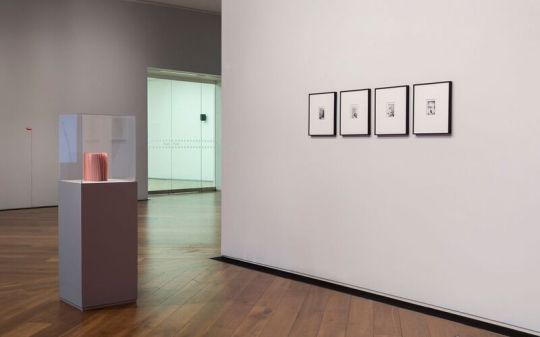
Installation images Photo: Wilf Speller, Courtesy Firstsite
Finn-Kelcey explores power and agency, there are political works, photo and video works, objects and interventions. Some works span these genres, including her striking ‘wind dependent objects’, or flag works. Fog, flown from Alexandra Palace in 1971, and Power for the People, hoisted briefly at Battersea Power Station in 1972. I like these artworks. I find them impactful, relevant and affecting. I’m reminded of political works by Vallie EXPORT and Yoko Ono, the text works of Jenny Holzer, Barbara Kruger even. The idea is the most important aspect, and the artwork exists in multiple times and in numerous guises. Although I like the interventions, performances and the photographs I’m drawn more to Finn-Kelcey’s intimate works, those which I feel, have a greater subtle poetry and poignancy.
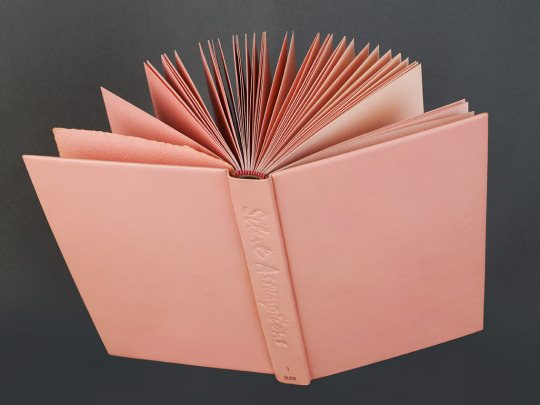
Blushing Book Vol 1 1977
Leather, paper, cardboard, dye
. Unique
. Approx. 16 x 23 cm
There is a quiet piece, Blushing Book Vol 1 (1977), which I feel excellently represents many of the artists’ key interests; feminism, spirituality, commodity culture and individual empowerment. This piece demonstrates Finn-Kelcey’s faultless commitment to her concepts, where each page of the Blushing Book is individually hand dyed, each page coloured a shade of pink to simulate the intimate act of blushing. Blushing is involuntary, an emotionally or psychologically triggered chemical reaction, which might itself be considered a biological artwork, one which the artist has sought to catalogue in this piece. In The Expression of the Emotions in Man and Animals Charles Darwin described blushing as "... the most peculiar and most human of all expressions." Although I cannot think of another artist who has attended to this particular visible manifestation of feeling. Finn-Kelcey bound the pages from light to dark, and was inspired by the work of feminist writer Anis Nin. Attractive and ahead of its time, in ‘millennial pink’, this object is balanced in equally striking aesthetic and concept. One of the most beautifully understated artworks I have had the pleasure of seeing.
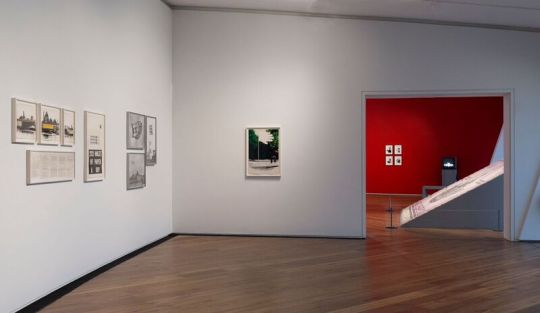
Installation images Photo: Wilf Speller, Courtesy Firstsite
Finn-Kelcey appears to have created a body of work which looks to investigate relationships and condition of being human. The performance piece and photographic documentation; Bulls Eye (1985) and Untitled: Bullfighter (1986) challenge relationships and conceptions to, and of, gender. There is feminism here, over femininity. The work is confrontational but not aggressive. Finn Kelcey appears to be encouraging us, or rather me, to engage with my own ideas and preconceptions, about gender and the environment. The work conveys a sense of self-empowerment, reminiscent of something Marina Abramovic or Alexis Hunter might produce, arguably both contemporaries of Finn-Kelcey. Broadly the works encourage viewers to explore the perception of self-identity, theirs and the artists’, as many questions are posed as they are answered.
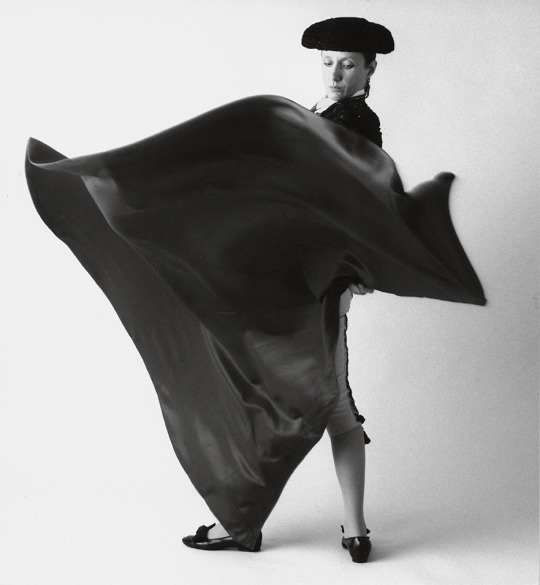
Untitled: Bullfighter 1986
Black and white photograph of the artist as a matador performing a Rebolera or cape pass.
Unique
W 42 x H 44 x D 3cm
It Pays to Pray (1999), is simultaneously ironic and stirring. It invites participation, at least I think it does, although there is tension in the ‘not quite sure’! It’s neon message whirls on repeat, attractive, captivating even. It asks for money, in return it says it will display a prayer. Gallery interpretation informs me that each prayer is named after a chocolate bar, the ultimate aid to quick fix chocoholic consumerism. It is a neat and tidy concept, intended as a public sculpture. I hope its installation in a gallery is the only factor which renders it’s neon invitation unclear. Perhaps in order to be complete this work and some others displayed here need an additional force, an audience, to be complete. In fact, the flag works in particular rely on this intangible natural force, the wind. This exhibition is full of ideas, concepts and thoughts which the artist appears to be presenting for the audience to take up and use as intellectual weaponry. Finn-Kelcey makes suggestions, floats ideas and the audiences’ activism is bought to question.

It Pays to Pray in 2000
Four vending machines
LED’s, metal, glass, electronics. As installed at
River Walk, Millennium Dome, London
I purposefully save the collaborative sound piece; Truth, Dare, Double Dare (1994) for last and I’m glad that I do. It’s moreish, I cannot give up on it or give in to it or give it up, until every last scrap of sound has fallen on my ears. There is something poignant about the fact I’m alone in this empty gallery, entered though glass doors, closed off from the main space, staring at blank walls, devoid of all visual stimulation, sat on a gallery bench, the generic type, alone apart from the man mirroring my position on the opposite side of the room. I stop listening for a second to wonder if he is noticing how perfect this feels the sound piece comprises of voices reading statements. At first, a female voice (Rose) recounts sentences about a man (Donald) and then a male sounding voice (Donald) monologues a series of statements about a woman (Rose). I hadn’t read the wall text and manically note down some of the things Donald is telling me. In short, simple statements, he tells me; ‘Rose is an enigma, she fears her body, is neat, doesn’t get excited, that this collaboration was her idea, Rose believes in the paranormal, he loves 60s Tamla Motown, wishes he was happy and cried at It’s a Wonderful Life.’ I am struck by how universal these statements are. I am focused on the words spoken, a conversation which allows no time for retort, a stream of unconscious thinking which represents a relationship between two people. On opening the door and retuning to the main space, on leaving the world of Rose and Donald to continue to turn without me, I read the wall text and learn that the work is an exploration of the artists ego, and confrontation of their incompatibility. The work feels intimate yet ubiquitous and omnipresent, I could be listening to my parents, my friends, my internal (or often external) monologue with my boyfriend. It’s conceptually simple, minimal but there is such depth that I find myself choked with the emotion, and I’m probably blushing.
Sensitively curated to allow maximum thinking space or listening space around the intimate works of art on display. Firstsite is a wonderful gallery for this type of minimal, conceptual art. Although, I have said the exhibition is spacial, on reflection I decide it is not. Certainly, it is devoid of clutter and in fact contains few physical artworks. Objects are installed as prompts, to spark and ignite, because all the areas and spaces between these works are actually filled, pervaded with the ephemeral intangible, individual ideas and thoughts of the gallery inhabitants. This, I think is Finn-Kelcey’s greatest concept of all.
*Rose Finn-Kelcey Obituary, Guardian newspaper, 24 February 2014.
Power for the People is on at Firstsite Colchester, until 4th March 2018. It brings together over four decades of work by British artist Rose Finn-Kelcey, who first came to prominence in the early 1970s as a central figure in Performance and Feminist art.
Images courtesy of the artists website:
http://www.rosefinnkelcey.com
#Women Artists#exhibition review#rose finn kelcey#feminism#female artist#installation art#conceptual art#blushing book#alison humphrey#firstsite#firstsite colchester
94 notes
·
View notes
Text
Class critique was on 29th of April Statement 2021 [workshop2] developing ideas. Transnational, globalization Unrest and settling in Hybrid space of not belonging here or there. My work talks about the rootlessness, fragmented identities, Multiphrenia self, permanently being rooted in emerging or formative state of living. Globalization and hybrid identities is the new norm. Mona Hatoum, Dorris Selcedo and ideas of postmodern identities have influence my art making process. Materials and bodies as threads which can be cut, tied, hanged loosely or tangled in an ambiguous dynamic global space to move freely and have multiple trans- national ties beyond imagination. One branch is grounded as though it will roll, or stay there lying…. Brief story of yours and mine threads moving across the globe and getting tied, tangled and yet reluctances to moving away in spite of loving madly. We cannot associate with anything strong, secure and central anymore hence spread out and being undefined is our new form which resonates in this work. There is restlessness, exploitation, insecurities, opportunities, hybrid space to think. The branch is cut, yet has many fabric roots like tentacles or hands which wants to touch the ground, hanging in thin air.... The world map in thread form as though when one flies above the lands, has its own 'routs' which connects people and goods to different places within hours, time to slow down or reflect and absorbed is missing. The speed of technology and movement is too dramatic and difficult to comprehend so the tangles it leaves behind remain unresolved, or fragmented. Trauma , pain is not easy to convey, yet the organic materials speaks in a language which is strange like the songs of bees and birds... if only you have heart to listen to it. The more we comprehend the protean self, fragmentation and global crises of identities the better the progress towards the multiple citizenship, Transnational and global identities, laws to protect large segment of people who are venerable to exploitation due to being displaced. To share ideas, wealth, materials to reduce extreme poverty, cyber-crime and many other world issues we have to be in this space to make any real progress. Questions How does issues in this work sit with other people? Methodology as way of working what do you think? Art and non art issues which are relevent to this area of investigation? Is the theme any interest to the others- Others are non Europians, non English speakers or second language, or struggling democracies? Will my art be any effective? Change of heart or ideas? Or will just be a buzzing sound which will be ignored? What art is popular, liked, and have significence? Is New Zealand ready for so many Artist to emerge at the world scene and how to attract the attention of the audience to the drama of life? Art as performance mimicing life? Statement in making..... Transnational, globalization Unrest and settling in Hybrid space of not belonging here or there. My work talks about the rootlessness, fragmented identities, Multiphrenia self, permanently being rooted in emerging or formative state of living. Materials and bodies as threads which can be cut, tied, hanged loosely or tangled in an ambiguous dynamic global space to move freely and have multiple ties beyond imagination. Brief story of yours and mine threads moving across the globe and getting tied, tangled and yet reluctances to moving away in spite of loving madly. There is restlessness, exploitation, insecurities, opportunities, hybrid space to think. We cannot associate with anything strong, secure and central anymore hence the threads undefined is our new form which resonated with my art. The branch is cut, yet has many fabric roots like tentacles or hands which wants to touch the ground hanging in thin air.... I have the world map in thread form as though when one flies above the lands and has its own 'routs' which connects people and goods to different places in no time.... Life gives one very little time to reflect and absorbed but demands action and movement which is too dramatic and difficult to comprehend so the tangles it leaves behind unresolved... Trauma , pain is not easy to convey, yet the organic materials speaks in a language which is strange like the songs of bees and birds... if only you have heart to listen to it. The more understanding of protean self, fragmentation and global crises of identities is promoted we stand to gain in solidifying the compassion and wiliness to accept change as natural process of life, The right winged ideologies, Xenophobia, racism and self as solid unified identity can be challenged everywhere. Multiple citizenship, Transnational and global identities, laws to protect large segment of people who are venerable to exploitation and to share ideas , reduce extreme poverty, cyber-crime and terrorism across the globe holds the keys to real progress. POST CRITIQUE NOTES: TEMPLATE (what to include)
1: Statement 2: Photographs of work including presentation shots 3: Mode of critique 4: Feedback (bullet pointed or paragraphed) 5: How I see my work progressing over the term (bullet pointed or paragraphed 1: A discussion of a theme - How do the issues in this work sit with other people
- What other works or ideas do the audience think might be of interest to the artist for comparison, contrast or further research?
-What positions do the participants have on these issues/ ways of working? -What are the general art and non-art issues relevant to this area of investigation? - Is this theme of interest to others?
For the second part of the critique photographs I will be uploading all my pics on Tumblr.
The mode of Critique- Open group discussion, looking at the work with critical eye[ own personal view and where it sits in contemporary art history, other Artist's influences] . Critique notes.
Feedback
Without reading the statement- Art works look Faminine, connectivity, community, domestic.
One colour would have more impact rather than so many colours.
Pots and cooker non-western, and not sure how it ties with other works.
The theme or the work does it have an impact on the viewers? No/Yes as people have varied personal experiences.
Statement and ideas are very broad.
If the work is political , needs to be more explicit.
Focus on your story rather than trying to make your work relate to everyone.
You have created really ambitious body of work even though slightly unresolved.
These are critique notes written by Hollie for me to reflect.
My own sound recordings which I took with my mobile
Statement is read first before they look at my work.
Ideas of Entaglement comes out strongly even without reading statement.
The statement sort of dictates how the work has to be read rather than being suggestive.
General feedback or first impressions.....
Joining and entanglement is there... voice is blurred....
My other works got pulled into the critique... pots and chain.. Women in hybridity.crafted. 3rd element a kind of thinking...
Community, ties. Colours and it place?
The colours keep changing[ protean self]
Mutiplicity is depicted by use of fabric and different colours.
Addressing the heaps[ people's clothes]
Is art effective?
If it is relevant to people, they will notice, as people have access to so much information it becomes quite hard to judge or know how much people have taken in.
Your work can add to the chorus of voices,
One colour would have been more effective in raising questions? Rather than the multiple colours and what do they represent?
Rootlessness or being outsider[ these experiences are not familiar to people who are born, grew up or more settled in their way of living, there is playfulness as it reminds of routs connecting [roads,planes] cultural flux....
Where you belong, very broad, statement is very broad....
Very interesting visual impact...
No harm in saying political,
Other form of map.... evoking field thing, decisive subject...
Future works-
Addressing the mobile workers...
Explicit politics can be addressed.
Heaps of cloths- potentiality of people...not easy to read.
Clothes as bodies... important as metaphorical.
Questions has to be related to your works only.
Any urgency that can be seen which can make work looks effective.
Are you avoiding your cultural reference?
More personal voice is needed,
Al Jazeera can be seen in statement[opens up the questions]
General or personal?
Sensation –sound tumeric [yellow colour] can be included.
Related -general or personal.
Potential and interesting dynamic aspect to each work.
Thanks to Everyone.
5: How I see my work progressing over the term (bullet pointed or paragraphed
It is vast subject which I am training for and getting ready to address for many years to come. I see myself sitting at this cross-road and would make my art for long time to come. Workers in Gulf countries and impact of their long absence on them and their families.
I want my work to go into contextual research more in depth.
Look for the work which deals with the topics and issues which I want to speak about.Political -social impact of modern day slavery mobile workers issues,[ how people get exploited]
Methodology, materials, process, research which is fact based.[ Mona Hatoum, Doris Selcedo, Anselm Kiefer and many others as my artists family.
I want some people whose details I could use without using their personal names.
I want to address the political issues as it deals with people who are marginalised, poor and do not understand the importance of legal rights and protections.
As I want to talk about the stuffs which people do not think they exist.
Modern day Slavery, missing of fathers, sons and husbands, impact on women and children.
Economic gains to the countries they work age 20 to 60 yrs olds.
Absence of citizenship and working on time bound visa which gets renewed many times over many years until many die or leave the country old... still on working visa.
0 notes
Text
Trevor Paglen (Huge Inspiration)
After, in the class, we saw Rita’s gallery visit, which was at the Barbican showing Trevor’s work: From ‘Apple’ to ‘Anomaly,’ I realized that this was my guy. I decided to go to his show next week at the barbican. There were only two pieces, it turned out. I went through the whole show in less than 10 minutes. I knew that his work with data and classifications is what I was interested in. He wasn’t just an artist interested in data sciences, he also had a deep aesthetic sense. The lighting, and the framing, of the ‘this is not an apple' piece, which then leads to the next one, a series of over 20,000 images starting from an apple (Trevor describes as a "nouny noun") and ending at the anomaly (he describes this as entirely subjective).
I decided that I needed to learn all about him. I bought two of his books, one, a small one on his Barbican show, and the other, a larger one about his oeuvre with multiple interviews and essays and most of his work. The following are from the 19 page long notes I took from reading the books. They led me to an idea which I will reveal in the end.
My initial idea before getting on with Trevor was to maybe create an entirely new social media platform free of all the suspicious usage of users’ data that the current option we have engaged in. In Rita’s presentation in class, her description of the apple piece in the show struck me. She said that AI sees an apple as an apple, whereas, as humans, we can see it as ‘this is not an apple’...
Trevor, in the first interview, said that he didn’t think ‘timeless truths’ exists (Trevor Paglen, Phaidon, p.12). According to him, every artist has to decide what they are mainly interested in and process accordingly, not because they are compelled by an external (institutional, for example) force.
He is an in-depth researcher with a Ph.D. in Geography, masters, and a bachelor's in Fine Art. I love this aspect of his work. Many artists like Michel Hoellebueq (French Author) proudly disdain research as something that is for inferior artists, which I find quite outdated and outright wrong. The reason for this is explained quite well by Paglen (p.13). The artist shows their audience how to see things differently, and Trevor says, seeing things around us difficult. “Everyday life is sculpted and modulated by forces that are usually quite invisible to us....” This is why research is vital; to understand how the structures around us are working and transforming in their speed. And by engaging through an understanding of the functionalities and scopes, we can see possibilities. This is precisely what I wrote in one of my previous blogs. The audiences are too scared of tech, and so cannot imagine an alternative, and I wanted to change that. However, before inspiring the viewer to believe alternative ideas, the artist herself needs to be able to see her subject to its core. Trevor says that “when I talk about learning How to see the moment we live in, I mean developing new metaphors in new vocabularies that can help us orient our perception and make sense of the world around us” (p.32). Research allows “you to think far more complexly about a subject than you can without that language.”
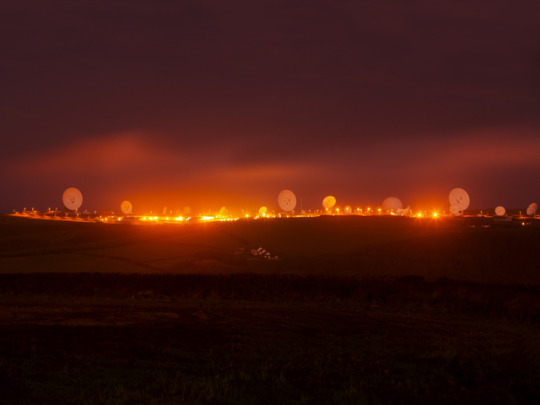
NSA GHCQ Surveillance Base, Cornwall, UK, 2015
My initial idea about making a functional alternative social media did not do it for me. I felt a lack of imagination in the concept. It felt reactionary at best. Trevor articulates for me what I was lacking (p.29). He says that art should not be about a strategy to accomplish this or that. “I don’t think that art does linear arguments very well at all. For example, in a lot of the visual work, I have done... I am trying to take familiar images... and suggest that they mean something different from what you think they mean.” He says that art can inspire but not relay a message, which is accomplished via writing. He says that art and literature can go hand-in-hand to drive a message home, but the art on its own “is just different.”
Investigative rigor:
I have always appreciated art that was a result of in-depth knowledge that is critically engaging, not superficial impressions. An impression is the first instinct, and relying on first instinct is extremely dangerous as it is informed by deep-set bias we’re brought up with. His work Terminal Air (2007) showcased the (US) government’s covert anti-terror operations, which flew suspected people away to far off locations like Guantanamo Bay.
As already blogged about, I work for the Uni student-run independent newspaper The Leopard. This year I became the News Editor, which means that I have to not only work on my pieces but also guide and edit others’. Paglen’s work has a lot to do with investigations. He does in-depth research into how top-secret things by the government--of the US- such as the missions carried out to kidnap and torture suspects from the country taken far off to places like Guantanamo Bay (p. 72). He said that he was “drawn to the patches--mysterious to those unfamiliar with their acronyms and iconography...” He learned the grammar of the way things are done through is research, and that is how he figured out more about the secret world (p.65). This interest transpired in his work Torture Taxi, for which he had to go through “raw documents culled from aviation records, corporate records of front companies, various declassified reports, and documents obtained from lawyers representing prisoners at Guantanamo Bay... the interlocking webs of front companies, fake identities, drop boxes, airfields, law offices, flight records, and numerous other pieces of seemingly banal information that constituted the rendition program’s basic infrastructure” (p.70). He went through all the leading companies and every single person, fake and possibly real, mentioned in the documents. He verified a list of places where actual hidden work happened and photographed them (p.72). The photographs were shot from afar zooming in. The images make one feel exactly like they look, confused by the banality and the fact of the reality behind the banality. They are quite dark. In his Barbican book, Sarah Cook writes that he is interested in seeing what invisibility looks like (Barbican, p.8).

Torture Taxi, 2013
In other words works, he shot videos of secret locations that are blatantly out in the open using a drone (p.77). He also mapped out the flight connections of various suspects being flown around a few select spots from the US. This exposure of highly salient yet openly being done things that are supposed to be hidden makes really resonate with my work in journalism. I am always trying to figure out what is going on. But over time, I’ve come to realize that there are multiple truths in any situation, various parties with numerous reasons. And I became tired of negativity. As seen in my previous blog posts, I was quite cynical and provocative with the audience. I would like to do something more balanced this year, as I am also trying with the articles I write and edit. Looking at his work can make one feel more optimistic about what can change because they know what has been happening right around them. They can talk about it, they can participate in it, they can engage with it.
Apart from political investigative matters, he’s done in-depth research on outer space use to the world too. That is political also, as it has to do with the US’s space work as a state. He has looked into how the satellites that are ‘secret’ roam the space looking everywhere along with satellites from India and China. He says that “even though they aren’t supposed to be officially there, these spacecraft have to obey the same laws of physics that everything else in the known universe has to obey” (p.128). This is important here because it reiterates the idea that what is out there that people see are arcane and mysterious is actually something they deal directly with, too, in a very tangible way. They follow the same physics as everything we know. I was writing about this before, wanting to make the arcane algorithms accessible to the people. The same philosophy as that of the founders of Git, open-source...
He then talks about how photography, his medium of much of his work. Photography was initially used for the same purposes as he uses it for. To research and capture the mysterious. The difficult parts being captured in photos were vital for the American military to find those spots which could be used for their operations. Muybridge, one of the great photographers in the US, was also working for the US military to photograph. “ Yosemite’s granite cliffs and forested valleys ” among other landscapes. Watkins, another famous photographer in the US, photographed for mining interests. Paglen points out that Muybridge was carrying a camera instead of a gun but doing the same thing: conquest for annihilation (p.130). This shows that his awareness of his own medium is critical. The photographers used their skill at uncovering mysterious places for the annihilation of those spaces. In a similar vein, through his photographs of the hidden secret operations’ locations of the US army, he is aiming for the annihilation of them.
His work is overall, highly aware of specificity. He focuses on particular aspects of a specific country. He doesn’t ever make grand universal statements as a lot of Western cultural producers do. He recognizes the smallness of his American scope. He expresses this by talking about an exercise in which you take “out all the pieces of music and languages that are familiar to you, then play the unfamiliar ones over a slideshow of the images. The “it’s a small” (p.132). He recognizes that there is so much his education in the US that has not exposed him to learn. And only someone sho dedicated to research would make such a statement about ignorance and hence the need to learn more deeply.
Machine eyes:
In thinking about what the future holds in terms of the consequences we will reap as a result of our current ‘progress,’ Trevor suggests a “kind of speculative ethical relationship...” (p.29). The progress of AI, the space debris, the consequences of anthropocentric plunder of the natural resources... Paglen also addresses the speed of information that we are dealing with daily. There is no information but doesn’t necessarily lead to thinking and knowledge creation. Sight is being detached from knowledge. This knowledgeless data consumption is precisely how AI works (p.101). Through artistic means, Paglen wants people to think expansively and imaginatively. And this coming to do with trying to speculate an ethical relationship with the future as we need, he applied ethics to our consumption as an idea materially in space (pp.135). Not thinking about the future results in cuts made in education budgets and climate catastrophe planning (p.135). He found that all the countries venturing into space were leaving behind a residue that will last for more than 100 million years. The most recent controversy was about India’s successful mission of targeting and destroying satellites in space from the ground. Imagining a future where someone will go there millions of years later and encounter that residue, he decided to create The Last Picture. The images he took and curated together were placed together in launched into space with a satellite rocket that was being launched by an agency in a city in the US (p.136). The images, he said, would be something like what cave paintings are to us today.

The Last Picture, 2012
The issue with how a machine ‘sees’ is that it sees everything precisely as it is. Trevor’s piece, Shark, Liner Classifier (2017), is a photograph of sharks that the computer is fed to see. The AI machine spewed out the image of Shark, which “looks. indistinct and abstract to human eyes, it is a Precise representation of the computer vision system” (p.33). Speaking about Machine Eyes, 2014, he says that the point mentioned before about looking without seeing, sight, and knowledge being disconnected. That is basically what machines do. Run through data, compare them, and technically parse out whatever is possible in those very reduced technical ways. This is what AI is. Sarah Cook writes that the role of the human is missing in all this (Barbican, p.13). And that is what needs to be scrutinized. I wonder if the machine, after all, is as smart as we think we are or make it?
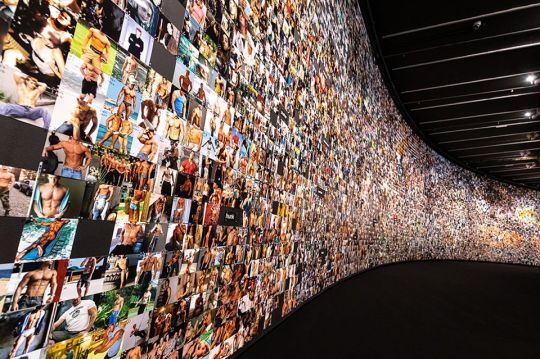
From ‘apple’ to ‘anomaly,’ 2019
In the Barbican book, Paglen explains how his work was dealing with AI. AI systems are developed by a few technology companies. And those companies, in the west, have a very limited worldview. Their perception of what means what is the basis for the ‘training set.’ This set contains classifications of representations. His work here is looking at a data set called ImageNet, which was created by professors at Stanford and Princeton. ImageNet took a gameset from WordNet, in which the collection of “words and concepts and scraped the internet for images that they thought would illustrate them...” then labeled those images. This set was created between 2009 and 2011 and wasn’t updated since. This means that the data set created by a couple of people in the US with a very limited worldview at a specific time was used. The collections were literally frozen in time and a particular place in terms of meaning. Paglen wonders how we could be shaping the softwares based on such data. He says that the creation of this data is entirely unethical (Barbican, p.41) because of its specificity. I think that the problem here is that the training set’s vision is very narrow and frozen in a specific time and place. So its claim to universality representing all humans everywhere is not valid. Pardo, Paglen’s interviewer, says that the basis is “outmoded” with subjectivities that are relationally subjective.
Paglen finally says: If we’re already looking at public training sets that have bad politics built into them, one can only imagine what is going on behind closed doors.
This sparked an idea in my head. What if we see what things will be like if the data set was created by people with good politics?
0 notes
Text
FULL PRESENTATION SCRIPT PHILOSOPHY AS RESEARCH METHOD:
PHILOSOPHY AS A RESEARCH METHOD
Abril Sigle
Giulia Procopio
Venus
Fiona Harnett
Our group has been looking at philosophy as a research method
Why philosophy? Philosophy is an attempt to express the infinity of the universe in terms of the limitations of language.
ARTHUR SCHOPENHAUER "All willing arises from want, therefore from deficiency
That having been said, atheism does seem to be a clear implication of Schopenhauer’s system: for given that this world is essentially blind eternal will to life, there does not seem to be any need for an intelligent and good God who creates this world.Schopenhauer’s discovery that the underlying “essence” of life is will is not a happy one. For, as the second of the Buddha’s “Four Noble Truths” tells us, to will is to suffer. What follows, as the first of the “Truths” tells us, is that life is suffering, from which Schopenhauer concludes that “it would be better for us not to exist”. He offers two main arguments in support of the claim that to will is (mostly) to suffer, the first of which I shall call the “competition argument” and the second the “stress-or-boredom argument”.In a manner reminiscent of traditional Buddhism, he recognizes that life is filled with unavoidable frustration, and acknowledges that the suffering caused by this frustration can itself be reduced by minimizing one’s desires.
The World as the Will:
●The Will is the actual and ultimate reality of the world and ourselves
●It is “the-thing-in-itself”
●We cannot know the Will itself but we every individual is a manifestation of the Will
●The Will can be seen in every action of the body and impression on the body (emotions, ect)
●The Will is violent
●Every act (manifestation of the Will) is either an act of procreation or destruction ●The mind is “self-deceiving” of the Will
ULTIMATE REALITY
●There is no hope in life
●Happiness is unattainable
●Any arts, morals, or sciences are only distortions of the will
•Seen as good, but are actually the manifestation of the Will
●Suicide may seem like the perfect escape, being the last act if the Will
BYUNG-CHUL HAN
Much of Han's writing is characterised by an underlying concern with the situation encountered by human subjects in the fast-paced, technologically-driven state of late capitalism. The situation is explored in its various facets through his books: sexuality, mental health (particularly burnout, depression, and attention deficit hyperactivity disorder), violence, freedom, technology, and popular culture. Han also uses his Eastern roots in his philosophical thinking. Back in 2002, when he was still an unknown, he published a book called The Philosophy of Zen-Buddhism. In this book, he illustrates that the Buddhist concept of ‘nothingness’—as the absence of an exclusive subjectivity—is what makes Buddhism pacifistic and non-violent, because there is no essence where power can be concentrated. Also, the concept of ‘emptiness’ is the reason why narcissism is something very un-Buddhist. There is no unchangeable ‘me’ in the mirror; rather, I am being formed by life.
“The acceleration of contemporary life also plays a role in this lack of being. The society of laboring and achievement is not a free society. It generates new constraints. Ultimately, the dialectic of master and slave does not yield a society where everyone is free and capable of leisure, too. Rather, it leads to a society of work in which the master himself has become a laboring slave. In this society of compulsion, everyone carries a work camp inside. This labor camp is defined by the fact that one is simultaneously prisoner and guard, victim and perpetrator. One exploits oneself. It means that exploitation is possible even without domination.” ― Byung-Chul Han, The Burnout Society Self exploitation.
In Han’s opinion, society’s attitude has moved from “we have to do it” to “we can do it.” “We live with the anguish of not always doing what we are able to do.” “Today a person exploits themselves believing they are fulfilling themselves. It is the wicked logic of neoliberalism that culminates in the syndrome of the burned-out worker.” This has a very damaging effect. “There is no one the revolution can attack, repression does not come from other people.” It is the “alienation of one’s self” that can manifest as anorexia, overeating or the over-consumption of consumer or leisure products.
“There is only one inborn error, and that is the notion that we exist in order to be happy... So long as we persist in this inborn error... the world seems to us full of contradictions. For at every step, in things great and small, we are bound to experience that the world and life are certainly not arranged for the purpose of maintaining a happy existence... hence the countenances of almost all elderly persons wear the expression of what is called disappointment.”
― Arthur Schopenhauer
JOSEPH CAMPBELL
“We're so engaged in doing things to achieve purposes of outer value that we forget the inner value, the rapture that is associated with being alive, is what it is all about.” ― Joseph Campbell, The Power of Myth
The divine manifestation is ubiquitous, Only our eyes are not open to it. Awe is what moves us forward.
Live from your own center. The divine lives within you. The separateness apparent in the world is secondary. Beyond the world of opposites is an unseen, but experienced, unity and identity in us all.
Today the planet is the only proper “in group.” Participate joyfully in the sorrows of the world. We cannot cure the world of sorrows, but we can choose to live in joy. ~Joseph Campbell
“You must have a room, or a certain hour or so a day, where you don’t know what was in the newspapers that morning, you don’t know who your friends are, you don’t know what you owe anybody, you don’t know what anybody owes to you. This is a place where you can simply experience and bring forth what you are and what you might be. This is the place of creative incubation. At first you may find that nothing happens there. But if you have a sacred place and use it, something eventually will happen.” ― Joseph Campbell, The Power of Myth
RINKO KAWAUCHI
The first photographer that I am going to share with you is Rinko Kawauchi, she’s someone whose work I am sure that you are all familiar with.
Her art is rooted in Shinto the ethnic Religion of the people of Japan. According to Shinto, all things on earth have a spirit, hence no subject is too small or mundane for her work; she also photographs "small events glimpsed in passing," conveying a sense of transience, for example this chick hatching from an egg.
She encourages the viewer to use their imagination to interpret her images. This series on murmuration epitomises notions of transience.
The philosopher Schopenhauer believed that art ( and that moment when engaging with great beauty takes us out of ourselves) was the only means to escape, however fleetingly, what he called the “will to live”. The purity of Kawauchi’s work can also be seen as an escape - moments of existence captured, never to be repeated.
She says that thinking too much is boring, not good. It stops the surprising from coming through. When a picture happens, she says thank you and moves on. It is only afterwards that she becomes the editor and imposes meaning on the work.
Schopenhauer interprets death as the aim and purpose of life and the origin of all philosophy. He maintains that to live is to suffer, that the triumph of death is inevitable, and that existence is a constant dying. So what happens when an artist finds out they have a life threatening illness.
GREG GILBERT
Greg Gilbert was the lead singer of an indie band - The Delays. On a UK tour back in 2014, he was having the time of his life, he’d just become a father and had settled with his girlfriend. But he found himself in constant extreme pain and was diagnosed with cancer. At the moment doctors told him there was nothing they could do he says he felt an interconnectedness between everything.
https://www.itv.com/news/meridian/2017-09-08/convalescence-art-and-politics-greg-gilbert-on-living-with-cancer/ Here’s an interview where he talks about his creativity has been shaped by his diagnosis
https://www.itv.com/news/meridian/2017-09-08/the-tyranny-of-positivity-musician-greg-gilbert-on-his-battle-with-cancer/ Greg Gilbert on the tyranny of positivity: What he said in the video...If video doesn’t work :(
As the father of two young children it is particularly cruel, the odds of recovery, slim. Whilst he believes in positivity…..he finds the “everything will be alright attitude” wearing. The thing that helps him most is ploughing his energy into his creative work; writing, drawing, reading.
The images are surreal in content, and while there’s no clear narrative expressed by them, they reflect some of the darkness Gilbert experienced as he underwent his first bout of chemotherapy.
He used one of the drawings from this sequence on the cover for a pamphlet of poems entitled Love Makes A Mess of Dying.Which brings me to: Jo Spence...
JO SPENCE
I recently wrestled with my own feelings about seeing the Jo Spence exhibition. I think Schopenhauer would say my fear of cancer is an inevitable part of my miserable existence and being able to view her work only through my narrative of fear, is a sign that I am being driven by my ego.
Here is a picture from the Final Project, in 1990 where she has been diagnosed with terminal cancer. During her second illness , photo therapy proved emotionally difficult, so a more story telling approach evolved. At the bottom she has written ‘What 1991 felt like, and in brackets most of the time.
“All the gods, all the heavens, all the hells, are within you.” ― Joseph Campbell
Conclusion
THE END
0 notes
Text
art & craft.
Arts and crafts days were my favorite back in elementary school. They usually involved brightly colored paper and paint, or on other days scissors and glue, but we were always allowed to make a mess, make anything we wanted – and it was considered art (as well as masterpieces by our parents). The entire class, artists for the day. Today, when thinking about arts and crafts, this is still the image pulled into my mind. Safety scissors, dried glue stuck to desks, shreds of multi-colored paper everywhere. But when confronted with the term “fine art and craft”, the image immediately changes. Fine art, in the eyes of most of the western general population, is reserved for Picasso, DaVinci, Hokusai, as well as many others. It is not so much given to my overly-glued brightly-colored construction paper masterpieces. But where does that line definitively lie?
The difference between fine art and craft is blurry, and mostly subjective, making it very difficult to resolve or simplify. Fine art is usually the title given to pieces considered to be commissioned, individualistic, and made to be appreciated for their imaginative, aesthetic, or intellectual appeal. (Delacare, 2019) Where crafts, on the other hand, are pieces that are made with a utilitarian intent, for the purpose of being used; ranging from mugs, to rugs, to various household items we use on the daily, and have for thousands of years.
Crafts, originally, were built as a product of organized pursuits. Back in the late middle ages, the development of guilds led to the popularization of art and artists as we know them today. (Farber, 2012) Guilds are places where craftsmen and merchants would come together and create an organization for the production of goods, usually for the surrounding town or community. It was the action of working as a collective that these groups were able to gain authority and control over the production, standards, and marketing of a specific type of craft. With this, came economic and social boom for developing towns’ economies. (Farber, 2012) Working within the guilds held a strict set of guidelines that led journeymen and merchants to put in years of their lives and work into a craft’s practice to rise up well-defined ranks that led to mastery, as well as passing along the tradition of making a specific craft. (Morelli, 2014)
This model of group-based work continued until around the year 1400, when the line between art and craft began to form. Intellectuals of the time began the movement of Renaissance Humanism in Florence, Italy, which took ancient Greek and Roman works and ideas, and reconfigured them, focusing on highlighting individual creativity and reinvention. (Morelli, 2014) Until this point, many famous painters were court painters, who were hired and petitioned by wealthy patrons, who paid them usually by the square foot for their work. But after a few painters had successfully petitioned their patrons to pay them by merit, instead, it threw the guild traditions of working until accomplished mastery aside; skewing the public opinion of materials and their creators, raising that of painters, sculptors, and architects well above the rest, naming them specifically apart: artists. (Morelli, 2014) To those that still worked by guild traditions, and made more domestic objects – jewelry, cups, candlesticks, etc. – were separated, and named artisans, whose works were considered decorative, or minor compared to the works of artists. (Morelli, 2014) The distinction began then, and still persists today.
There are a selection of different sides to take in this centuries-long controversy. First, you could be one of the ones that bases their stake on the factor of intention: who made the piece, but more so why did they make it? Does the intention of creation change the piece itself? Someone who takes this perspective is Gareth Bate, curator of the Joshua Creek Heritage Art Centre, in Oakville, Ontario, Canada. When asked about this distinction between art and craft, he summarizes: “Craft for me is not art. Craft is making things mainly for commercial purposes, or from other people's patterns without an engagement with the history of art and the context of contemporary art. That does not devalue what is being made, but it is different. Any material or process can be used for art making, it is the purpose and intention that matters. Why are you making it and is it from a subjective perspective?” (Rudman, 2012)
Meanwhile, craft, to people like Mike Goldstein of Jerry’s Artarama’s YouTube series “Artist Problems” series, is a piece created by following directional instructions for that creation process. Intention doesn’t create the defining line, instead, it is within the mastery of a craft that creates art. To him, making a piece considered craft (aka. within a comfort zone) leads potential artists into the creation of individualistically creative art. His analogy for this process is: “Let’s say you like to cook a lot at home, and you follow recipes, but that doesn’t necessarily make you a chef. I think for that chef title … you should be writing the recipes … slowly figuring out the ways to make things work … creativity … inspiration … confidence … that risk taking factor … you want to try your own thing.” (Goldstein, 2017)
My opinion lies intermittently between these sides of the issue. I agree that all art is subjective, intent does direct the message communicated by a piece, and that craft predates the creation of art. But my view is also entirely different from these two directions, because in my eyes, the separation between art and craft is entirely unnecessary. You can’t have one without the other, they depend on each other’s constant participation.
Craft, in this argument, predates art and artists. How does one paint without first learning how? Because of this, everything is art. Crafts, fine, or otherwise, there isn’t a distinction by these descriptors. Pieces created with intention, with love, either fresh and new, or have history ingrained into the very process of making them, traditions left by generations and generations before us, should be considered as art. Even if it isn’t aesthetically pleasing. Even in today’s world, if a machine made it. If it is handmade, or mass manufactured. Does there have to be an intention brought to each individual part of a piece? Isn’t it enough to bring something to life, to create, as the intention behind everything, every piece? Doesn’t that constitute beauty? Doesn’t that make it all art?
I’m not saying that we cannot have descriptors and specific groups within art itself, as it already does – visual arts and textural arts and digital arts – the list goes on and on and I love every piece of it. Rather, I’m saying that there is no need to have this negative denomination for created pieces that aren’t showing mastery of a material. Any level of crafts are art. Basket weaving, embroidery, scrapbooking; there has to be a level of knowledge behind them to even be created in the first place. An eye for design, for creative intent. Even though some are made for monetary economic reasons, or used in our daily lives, just because something is considered a normal object, doesn’t make it any less deserving of its place within the category of art, or anything considered art enough to be hanging in a gallery or a museum. If a piece speaks to one person, inspires one person to dig deeper, to think or create or even breathe, then it is good enough to be art.

Chin-Chin, Caroline Achaintre, 2011. Courtesy Arcade, London.
Contemporary artists are making this distinction between art and craft harder to call everyday. Artist Caroline Achaintre works with all different types of typically designated “craft” materials, including textiles, woodcuts, ceramics, and watercolors. Her 2011 work “Chin-Chin” is a large-scale textile that includes many contradictions, pattern and texture-wise, but also conceptual contradictions, between “design and art, fashion and taste, abstraction and figuration.” (Tate, 2011) This combination of craft and the conceptual intentions of art exists on both sides of the line between fine art and craft.

Exhaltation, Zandile Ntobela, 2017.
The Ubuhle Art Collective was created to bring the tradition of bead-making to women of the KwaZulu-Natal province of South Africa, to preserve not only their livelihoods, but to bring to life once again the aspects of a lost cultural tradition. Zandile Ntobela’s piece “Exhaltation” shows an incredible mastery as well as individual creativity within her craft. Contemporary And explains the relationship between the tradition and craft brought to an audience: “Traditionally, the act of beading is a way for women to reach a divine state. Like streams of consciousness, allusions to water are woven in as subjects, and when on display, light subtly reflects off the surface of the glass beadwork giving the tableaux a sense of fluidity. For the viewer, the beaded objects express the artist’s spiritual power.” (Ubuhle Art Collective, 2018)
These pieces of tradition and history, the creation of works through this craft that has brought historic cultural traditions back to life again, are crucial to art history and cultural education. They should not be overlooked or deemed lesser for their craftsman roots. Instead, they should be raised on gallery walls, into history books, art books, theory. When art becomes accessible, it becomes seen, admired, inspiring. Who hasn’t seen a piece of art, craft or fine, and hasn’t been moved by it? Who hasn’t wanted to create right then and there, filled with inspiration? Who are we to define this line, to hold back future artists, future works? What kind of artists would that make us?
Works Cited:
Delacare, Evangelyn. “What is Fine Art?” Canvas, Saatchi Art. URL.
Farber, Allen. “Medieval Guilds and Craft Production”. Suny Oneonta. 2012. URL.
Goldstein, Mike. “Artist Problems - Real Talk: Art vs Craft”. YouTube,
uploaded by JerrysArtarama, Apr 21, 2017. URL.
Morelli, Laura. “Is there a difference between art and craft?” YouTube, uploaded by Ted-Ed, 6 Mar, 2014, URL.
Rudman, Dawne. “Gareth Bate, Interview | Curator of De Rerum Natura (On The Nature of Things).” World of Threads Festival, World of Threads, 2012. URL.
“Ubuhle Art Collective: Dreams Are Like Water”. C&, Contemporary And. 2018. URL.
Arts Cited:
Achaintre, Caroline. Chin-Chin, 2011. Courtesy Arcade, London. URL.
Ntobela, Zandile. Exhaltation, 2017. Ubuhle Beads. URL.
0 notes
Text
CORPORATE EVENT PLANNING ACTIVITIES
Why is event planning necessary?
Because planning is a very important part of an event management.
This is done because event planning activities function so that conference and event activities can be directed towards achieving goals, which are carried out effectively and efficiently.
Based on experience in the field, there are several complaints that are always heard regarding the implementation of conferences and events, namely:
Potential minimum number of participants
It is difficult to change the conditions between surplus and loss.
· Lack of budget planning
· Lack of interaction among members of the executive committee
· If these conferences and events involve a professional planner / organizer company, then, there are often doubts about the work area of the planner / organizer due to a lack of understanding of the function of a planner / organizer.
Based on the explanation above, planning in conference and event management involves at least the following areas:
· Reservation
· General management
· Travel services
· Financial administration
· Paper management
· Registration
· Publication
· Exhibition program management
SWOT
In conducting an event planning, the first thing to do is pay attention to strength (strength) and weakness (Weakness) before the event is held.
If the weaknesses outweigh the strengths then it must be carefully considered whether to postpone the event or not
• While opportunities (opportunities) and threats (threats) of the event usually appear during or after the event took place. Opportunities are all factors that bring benefit or a benefit event without any effort or additional investment by the organizers.
• Threats are all factors that hinder the organization from developing its full potential.
SWOT EXAMPLES
Strength:
a) Unique and never done before
b) Presenting reliable and well-known guest stars and celebrities.
c) Strategic to influence audiences
d) Packaged with creative and innovative modern techniques.
e) A publicity before, during and after the event.
Weakness:
a) HR is not available, so we have to look for outsiders
b) Not able to reach certain audiences.
c) Requires a large fee
d) Not interested in the mass media
Opportunity:
a) Support from the Sponsor
b) Support from government, non-profit organizations or private companies
c) Support from the mass media
d) Outstanding support from audiences.
Threat:
a) Brawl between spectators
b) Technical problems
c) Cancellation of guest stars.
TOR & Preliminary Proposal
• Pre-Proposal / Preliminary Proposal is a proposal that has not been completely packaged in its appearance. Its use is not only for internal purposes but can also be submitted as an early stage proposal to certain parties, but cannot yet be presented as an official offer or as a Sales Kit.
• A Pre-proposal can provide an overview of the company's cash flow in the next year, if all planned events have been compiled in the Pre-proposal format.
• Pre-Proposal can also be used as a sales kit preparation or information that will be disseminated for Public Relations purposes in the Mass media.
EVENT FINANCING
Guidelines for managing event finances Whatever the type of event that will be held and no matter how big, a plan is needed in managing event finances.
Important factors that must be considered in the budget sector are:
Budgeting must be realistic and in the process leading to implementation it tends to increase budget costs and allow unexpected costs to occur.
• In preparing the budget, a strict control is needed, namely: holding back the rate of increase in budget costs and unexpected costs, as well as controlling budgets that have the opportunity to be reduced or efficiency so as to create a controlled budget balance.
• So that in budgeting it requires Plan a followed by Plan B, Plan C and Plan D to anticipate soaring costs that have been arranged.
Distribution of Event Financing
Based on the time sequence of expenses in an event, it is divided into:
· Cost Before Event
· Costs incurred before the event starts, for example: Advances for space rental costs, Promotion Costs, Marketing Costs, etc.
· Cost During Event
· The amount issued during the exhibition. For example, consumption, transportation, accommodation, honorarium for performers, etc.
· Cost After Event
· Costs incurred after the event are generally for repayment, but also costs that must be incurred, such as: costs for media coverage, additional facilities, etc.
· The Art of Controlling Budgets
Set the "terms" of payment, must be adapted to existing financial conditions. May not make payments without calculation.
Down payment or down payment is an important factor and part of the strategy to manage finances. While repayment must refer to the schedule for the income of money from sponsors, ticket calculations and other sources.
Several things that can be arranged with various payment terms include:
1. Payment at the initial stage (first)
a. Licensing
b. Advances for rent
c. Advance viewer
d. Advances for stage equipment, decorations, tents, and so on
e. Sound system Advances
f. Communication & Transportation Costs
2. Payment in full before the event:
a. Viewer honor
b. Consumption
c. Security Honor
d. Press publication costs
e. Watch tax fee
3. Payment in full after completion of the event a maximum of 3 days:
a. Operational officer fees
b. Honor LO (Liaison Officer) VO (Volunteer Officer)
c. Documentation fee
4. Payment in full:
a. Hotel accommodation
b. Vehicle Rental Fees
Make an Event Proposal
Preparation of Proposals Compiling a proposal is the result of a methodological study. Write a correct and good proposal, combined with the art of imagination.
In order to provide sufficient information for a potential sponsor's needs, a proposal must contain the following:
1. General description
Gives an overview of your organization and the benefits you can offer to sponsors.
2. Event / Property Details
Information sheets that list date, time, location, projected number and profile of visitors, ticket prices, membership numbers and so on - all of which are related to hard data (quantitative). The information provided here varies depending on the type of event being held
3. Marketing Plan
The marketing plan that you have put together is listed in this section. The plan describes how you will market your event, the value of all marketing components, the media you will use, and the publication plan.
4. Market Research
To get sponsorship, you need to have comprehensive information about your target market, at least their profile - who they are, their level of education, where they live, and so on. Of course this is obtained from research
5. Pusher
In order for the sponsor to be sure of the benefits you offer, show evidence of the benefits that have been obtained by the sponsor at the event you have previously organized.
6. Benefits Package
Present some of the benefits listed in the benefits inventory to your potential sponsor. Use bullets for each benefit. To make it easier to understand potential sponsors, you can also group these benefits into predefined categories in the list of benefits inventory
7. Investments
In this section you should detail all forms of investment that the sponsor can contribute. This investment can take the form of:
a.Cash
b. services or goods
c. promotional support that directly benefits your organization
In this section enter the due date for payment and the incentives you are offering
Main Purpose of Proposal Making
The main purpose of making an event proposal is to explain the basic concepts and ideas of the event to be made in detail in an effort to convince potential clients that the concept is offered with many advantages so that prospective clients are expected to choose your concept.
· Concise Proposal
A short proposal is a proposal consisting of 2-3 pages that contains an overview of the event, target audience, marketing, promotional strategies, and the main benefits offered. This method is an effective way to attract potential sponsors. Don't forget to include your contact number so that it is easy for potential sponsors to contact you.
As a guideline, the number of pages of a proposal is at least 4 - 5 pages while the maximum is 12 pages, more than that, your proposal will not be touched by potential sponsors. In addition, the proposal must be easy and fast to read.
· Pricing
Fixing a price is the most difficult and the most vital part. First and foremost, the total costs should be slightly more expensive than if the sponsor were to run the event themselves.
Your proposal must prove that the sponsor will be more profitable about investing in sponsorship than if it is advertising. The value of the excess profit is approximately 150% to 200%. Because there is a tendency for companies to stay in their comfort zone by advertising.
It is very important that you do not disclose your planned expenses, as this will tarnish your image and indicate that you are more concerned with your own needs than your organization's self-respect.
Calculating sponsorship prices
The difference between the cost of providing benefits and the price of the sponsorship is your profit (or loss).
Costs for providing the benefits offered
+ Staff and administrative + Cost of sale + Service fee
= Total cost
Example of Making an Event Proposal
The process of making a proposal begins with:
1. Client Briefing
• For example: Prospective clients are international companies, world-class medical equipment manufacturers with branches in many countries including Indonesia.
• One of the products is a slimming tool and fat removal in the stomach.
• At the start of the launch for the first time this product became a bestseller among other products in the company. But currently the sales are stagnating and staying at a certain level.
• So the company wants to hold an event to get the tool back into a bestseller and increase sales.
2. Brainstorming (brainstorming) among team members.
• The core team discussed after previously discussed the briefing of potential clients, enrichment of product materials, product target markets starting from the economic level, habits and lifestyle to the product testing process.
3. Proposal
• There is no standard rule that the contents of the event proposal must be as exemplified but on average have the same pattern.
Example of Making an Event Proposal
The content of the proposal usually consists of:
a. Background
b. Aim
c. Target market at a glance
d. Event Theme
e. Implementation of the event theme
f. Event series mechanism
g. Event Support / Talent
h. Stage sets, and so on.
Courtesy: event management company in Lahore
0 notes
Text
EPISODE 6:Sorry hosts and viewers but we're keeping the inactivish girl. -Ryan M
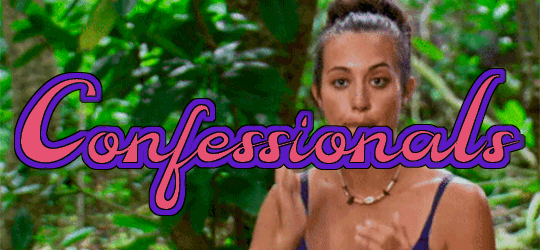

My new tribe kinda slaps? It’s just nice playing with people who have the fight to win. We fucking S L A Y E D Jeopardy. Ken Jennings who? It felt so good helping my tribe win. For this reward comp I’m a little worried because we have a good system but if someone doesn’t show up, we’ll all hit 5 and be screwed. Also poor Glo, she’s just out here doing her best. She’s cute, but I don’t want that to carry her to the end like it did in Mongolia.

Finally have my computer back, so I can start writing confessionals as I think about the game. It sucks that Chloe was voted out. She was definitely my #1 ally in the game, so seeing her leave just sucks. And now I am on a tribe with 4 Royals who would be happy to vote me out the second we get to tribal council. I doubt my social game will let me leave here alive if we go to tribal. Instead, I just have to make sure we don't go to tribal. I need to put in all my effort in the next immunity challenge lest I want to be in the VL watching the rest of this season.
* a little later*
I've been socially active with Seamus and Amanda today. I hope I can grow a tight bond with them in order to keep myself safe for tribals to come. Especially if I manage to get to merge with a tight three. I'm praying that things work out because I need this for my own sanity.

It’s truly like babysitting this tribe lmao Like I know this is reward but how fucking hard is it to post on time. I worked a 9 hour shift today and still posted on time when I said I would. We have the lead, like why squander it. Also, I’m hoping we win out to til merge because I really don’t want to go into a tribal at swap in the minority. I feel like I might be making myself a target bc I’m being a little aggressive with this comp BUT I regret nothing.

I feel like I’ve been too MIA I’m kind of just ready for a tribal so I can get a little blood on my hands! Sorry I am the most boring player ever I’ll post something juicy tomorrow

I'm glad that we won the reward challenge. It must be a good omen for the next one, but I have to put in twice as much effort! I'm not planning on being the next one booted, so this tribe needs to pull its weight and get to winning!

Well I don;t know if I am coming or going or who is with me and who is not. I was lost on reward challenge and posted few times but they all offered to help me lol So how is my game ok I guess but I feel lost in a wilderness cause I think lots of these players know each other very well and I am lost

I feel so bad for Chloe. I stopped talking to her after Seamus told me she was debating between voting for me or Amanda. I feel like we all felt like we liked Chloe but we've spent so much time together. And also maybe a pagoning or w/e would be a little fun!!!! She's so sweet I wish she started off a royal.

Well I just BOMBED that challenge. I love to read but suddenly my mind went blank and I could only think of books with long titles! HAHA. I majored in art in college for a year and suddenly I forgot every color in existence! Hopefully the other tribes blanked so we'll be safe. 0:-) If not... maybe the royals will stay together but no lie, I've been talking to John and Lachie more than Pippa and Ryan.

I'm happy two tribes are going to tribal. Because I really want to see them vote ugly people out!!! But also if we go to tribal nbd Raffy goes. He's completely okay! But I love Seamus and Amanda and I think I can also get Anabel to trust me come merge time. xo

I am praying to god all-mighty that we win

WE LITERALLY COULD'VE WON IF ANABEL DID EVEN HALF THE CHALLENGE!!!!! I was so down to get rid of Raffy... still could... I like Anabel. But... I already feel bad about voting out Chloe and this time it's like... obvi Ana deserves to be voted out... ugh

I hope the 5 movies Glo could muster up in 60 seconds were all of the Twilight franchise movies
*Dan comes back ten minutes later*
Okay but real talk, 5 movies??? Glo you could only name 5 movies in 60 seconds? If she had done as well as Asya and gotten 28 we wouldn’t have gone to tribal. I really pray I can get Dane or Linus to team up with Asya and I. I mean if it comes down to it and I have to vote out Asya, I guess she better get those bags packed!

I am so pissed that we lost. We easily could have won this competition if Anabel had participated, but she's evidently bad at time management. If you knew you were going to be busy the next day, why wouldn't you do the challenge the night it was posted? I'm so over it! For once, I didn't want to have to go to tribal, but now I can't even have that. Not only that, but I'm pretty sure that I am the target since I am not a Royal which is utter bullshit. Hopefully my social game has paid off and I have bonded enough with these people, but I am not too sure about that. I'll just have to put it all my effort into saving myself, or my game is sunk. Pray for me.
* a little later*
I think I can get Seamus. He and I have talked a lot during the limited amount of time we've had together. I want to consider him an ally, but I'm not sure if he hasn't been doing this with everyone else. My target is going to be Anabel for three reasons: 1. She is a winner (literally won last season) which makes a threat going into merge 2. She singlehandedly lost us the challenge 3. I haven't personally talked to her a lot so she's the easiest to target for me I want to get everyone on board, but I need to not pester them. However, I cannot just let the vote casually go towards me either. I'm not going out without a fight

OK SO. glo sucks at challenges. like it’s real bad. which is good for me. cause linus is like he doesn’t have any allegiances or whatever to old arioi and just wants to succeed so like. let’s cut the dead weight. obviously dan is down and that’s all we need. i’d like to get dane on board too but it’s not necessary. like really, i just wanna keep my no vote streak. which means if dane and glo vote for a manahune, it’s dan and not me.

Seamus brought up Anabel's name to me which is a good sign. He also told me that I shouldn't worry about being the only Rebel, and he is open to keeping/working with me. I hope he's telling the truth. Apparently, he's only talked to me about the vote, so I am hoping that's a good sign. Now I need to approach Amanda and Ryan. If one just votes for Ryan, then I should be good.
*he talks a lot*
Amanda seems open, but reserved. She's acting noncommittal which is worrying for me. I have to speak with Ryan later and get him on board. Keeping this tribe together will help me going into a merge. I'm just hoping Amanda joins my side and not Anabel's, in the end. There is still time to save myself.

youtube

youtube

So tribal council is coming up soon and I legit have no idea what I'm doing. I'm pretty sure I'm going to get voted out tonight since I'm spreading myself too thin. I have a couple ideas going on through my head and I can't decipher which plan will be the best to project me moving forward. The first plan I have is to stay royal strong and vote out Asya. I have Glo and Linus as fellow Royals to make the majority. If I do successfully blindside Dan and Asya tonight then we have the majority going into the last pre-merge stage. However, Glo isn't the strongest in challenges and this could result in us going back to tribal council. If we do go back to tribal council then there is the chance that Dan can pull out an idol and take me out. If we don't even go to tribal then there's no chance of me rebuilding the burnt bridge with Dan prior to going to the merge, resulting in another person coming after me. Also continuing into merge, I imagine I'm at the bottom of the royals tribe. People can "like" me but that doesn't necessarily mean that they want to work with me. I'd be continuing this trend of saving people that don't want to work with me. The other plan in place is for Linus and I to team up with Dan and Asya to vote out Glo. If we are possibly merging after tonight then voting out Glo in my opinion is one of the smartest decisions. She is very well liked and she's a very loyal player, I don't think she will ever be targeted and it'll be an easy flow for her to get to the end of the game. Also, Linus was telling me that Anabel talks to Glo A LOT, and that lowkey just reinforces this idea that I created of an all-winners alliance existing. If we have another tribal stage I don't imagine that it will be a double trial again so getting rid of Glo (the weakest competitor on our tribe) might be the best decision for the tribe. Also with getting rid of Glo, this helps solidify some sort of allegiance with Dan + Asya. Going into the merge with Linus, Dan, Asya would open up so many doors. Dan and Asya are very close with the rest of the Rebels plus, Dan and Amanda are high school friends. I spoke to Dan and I think we'd possibly team up to take out Ryan M. Ryan M. always plays these games personally and votes out Dan, and now that him and I are not on great terms Ryan will target me. I explained that to Dan that neither of us would win with Ryan M. still in the game so we need to pull strength and get him out together. Plus we matched on Tinder one time so that'll help build some trust with Dan. Right now I think the benefits of voting out Glo outweighs voting out Asya so I think that's how we'll go. You can't predict the future but I can outweigh the pros and cons and keeping Dan + Asya on my side while pissing off the Royals majority might benefit me more than being a sheep led to slaughter

I lied to Raffy about not voting him... I mean he's not dumb he probably has a string inkling. I just feel bad . Like Anabel deserves to go home but I think she'll save me in the future. Plus she has beef with Lachie we can feed off of. I'm sorry Chloe and Im sorry Raffy. Sorry hosts and viewers but we're keeping the inactivish girl.

So Um the votes landed on Glo? Super easily? So I’m assuming I’m getting blindsided

I think I should be good for this tribal. Everyone has given me their word that they are voting Anabel, and Seamus seems trustworthy. I just hope my trust his well-placed.
0 notes
Text
Paper代写:American thriller movie
本篇paper代写- American thriller movie讨论了美国惊悚电影。惊悚电影是美国经久不衰的类型片之一,其诞生和兴盛与人们内心的欲望息息相关。惊悚电影通过种种将人类置于绝境的叙事展现着人类的担忧、紧张与无助,吸引观众与剧中角色一起感到惊悚,将观众人性之中深藏的恶尽量地释放出来。同时,因审美距离的存在而使观众感到某种安全感,这有利于观众在日益紧张的快节奏生活重压之下进行排解。本篇paper代写由51due代写平台整理,供大家参考阅读。
Thriller is one of Hollywood's enduring genre films. Its birth and prosperity are closely related to people's inner desire. People have long had the aesthetic experience and aesthetic habit of releasing emotions in art works that evoke human fears. The popularity of gothic novels is a typical example of this demand. The birth of the film is the product of the industrial and scientific and technological progress, but it was also associated with industry and the expanding of science and technology, its negative effect also increasingly prominent, the human is becoming more and more to the outside world have an uncontrollable fear and helplessness, Nietzsche's "god is dead" is the 20th century people fear mentality as well as to produce the feeling of helpless on behalf of his own fate. In such cases, the emergence of thriller genre films has played a similar role to gothic novels, and at the same time, it has a role beyond words. Thriller movie through a variety of puts human despair of narrative show the human concern, tension and helpless, to attract the audience feel thriller with the characters and the audience hidden evil of human nature as far as possible to release. At the same time, the existence of aesthetic distance makes the audience feel a sense of security, which is conducive to the audience under the pressure of increasingly tense and fast-paced life. In terms of thriller movie, Hollywood is undoubtedly occupy a leading position in the world film, in a long period of time to explore, Hollywood has formed a set of relatively stable narrative mode and business practices, and the former has a direct impact on the latter, so for Hollywood thriller movie narrative modes is brief analysis helps us to grasp the thread of the genre.
In general, the narrative logic of the film is in pursuit of rationality, and the creator must provide the audience with a complete, reasonable and fluent narrative in the film. The reason why human beings need scary movies is precisely because they have witnessed the limitations of reason in real life. Human beings cannot control their destiny and manipulate the world by their own reason. Such as Americans in the contemporary suffered the biggest trauma "9.11" incident, and the resulting violent terrorist attacks, etc. These things are both evasive and attractive to humans. Therefore, thrillers must show the audience a world in which the order is completely destroyed and the reason in daily life is not applicable here. In this world, there is an unknown and enormous destructive force, and the problems it provides to human beings are difficult for ordinary people to solve under the existing conditions. Only when the audience is placed in such a narrative context can the plot be pushed forward smoothly, and the thriller effect of the narration can be brought into full play.
To the "museum of terror" as an example, the movie is a classic Hollywood thriller movie, there were 1953 by ender? DE? toth directed by version, and with m ? hill new version released in 2005. In the original, Gerald? professor Henry had indulged in sculpture art, built a wonderful museum, but poor earnings. Business partners and Matthew? burke to defrauds insurance money and set fire to the whole museum, professor Henry also missing in the fire, people thought that Henry had killed in the fire, he was miraculously resurrected and began a cruel revenge behavior. In his revenge, he not only kill the burke and burke's lover, even also plans to kill lover's roommate? Sue Ellen. After the attempted murder, Henry opened a new wax museum featuring death and violence, attracting Alan to watch. Henry was about to imprison Alan to make a wax statue of Joan of arc. After Allen escaped, Henry fell into hot wax in the scuffle with the police. Irrational logic of the story is that burke insurance fraud behavior is shocking enough, Henry after surviving without taking legal means to expose the crimes of burke, but revenge on their own, and would hate to burke's lover and entirely innocent Allen. In the process of designing to kill Alan, Henry was determined to make a wax figure of Alan. In the film, Henry's behavior is absurd and irrational.
The new horror waxworks has completely changed the story. In the movie, a couple living in a small town in the conjoined twins, when will they separate, elder brother was disfigured, and the younger brother's head also lost a large piece of leather, adult brothers suffered discrimination of people in the town because of the crazy revenge, will the whole town are made into lifelike wax. The crime of the town was exposed by a group of young tourists, and the desperate brothers began killing the young. Movie narrative also lost the rationality in normal story here, first of all, conjoined twins don't usually show face connection back before such a state, second, the two brothers keep such a small town near no man's land there is no such thing as the basis of the normal operation. But under such conditions set, small town, quiet, seemingly calm and orderly, in fact all made of wax, and the brothers with wax in the movie will be alive seal of terror, was enough to make the audience's heart seized by fear, ignore the unreasonable place of the narrative.
As mentioned earlier, the thriller genre narratives are closely related to its business operations at the box office, which is more obvious mda is a thriller movie, follow certain routine thriller movie seemingly conformism, but also in the film preparation is made at the beginning of production has a group of relatively stable potential audience. In other words, the audience who is tired and fussy about thrillers is not in the consideration of the movie's box office. The audience chooses the audience as well as the movie. Because the movie thriller pursuit is amplify the horror effect in a short time, not long time viewers retrospect and reflection on the movie narrative, therefore the characters image how deep or not, rich is not a thriller movie to pay attention to. And patterned film shots can guarantee in the shortest possible time from the screenwriter, taken to post-production and a series of process, entered the stage of theatrical release as soon as possible, to ensure the rapid withdrawal of funds. In this fixed mode, the typology of role building is one of the characteristics. Role is the key to movie narrative, the plot of the film is mainly composed of the characters and the relationship between the organization and promote characters, once the characters on the character, function setting is fixed, the film on the narrative basic coordinate are identified, creators have to do is plump the narrative on the coordinates. Especially when also entered the postmodernism film arts, people are more inclined to shape a face is not clear, the role of abstraction, to reflect the nothingness of the world, chaos and refractory.
The first is the mutant monster. Like the space monster in alien, it appears in an egg in the remains of an alien spaceship, a creature that does not exist on earth. The creature is able to attach to human bodies and emit deadly acid, which is a great threat to the crew of a spaceship. Such images can also be found in movies like jaws and godzilla. These creatures or from outer space, or from the inaccessible depths of the sea, or the product of the nuclear disaster on earth, although they vary in shape and capability, but for the audience, the meaning of them is a terrible, looks strange, can kill people. Because such characters exist in the image of "non-human", no matter the creator or receiver of the film, they can avoid the process of exploring their inner world. The second is the distorted image of abnormal characters. For example, John, the mysterious and cruel judge in the chainsaw movies, seems to know everything about people's privacy. "Hannibal" has a wealth of psychological knowledge, eating human flesh Dr. Hannibal, and so on. These people may look like ordinary people, but they all hate society for various reasons and are keen to torture others for pleasure. As in zc m? hill directed "the orphan hatred," the protagonist Easter is actually a appearance of adult women with children, due to the shape and manic diseases, she could not lead a normal life, but with the identity of the orphans to be in an orphanage. Once she was adopted, she would try to seduce the adoptive family and the male owner. Because of the size of her young child, all her attempts to seduce her ended in failure. In the movie, east to collapse adoptive families as soon as possible, even cruel killing orphanage mammy, then try to burn the adopter's son, had made against the adopter deaf daughter car accident. What's more, the discovery that the woman in the east is in trouble is not trusted by the man's owner, leading the audience to see the family sink into tragedy. Although these characters are part of the human race, they are remembered not for their mental journey, but for the great harm they can do to others.
Open narrative structure is at the end of the film does not give the audience a happy ending, the development of the plot to can have a variety of possibility, the fate of the characters exist or happy or sad. The audience can participate in the narration of the film in the open narrative structure, and make up the ending of the film according to their own understanding and subjective intention. This kind of narrative structure is constantly emerging in Hollywood thrillers. Unlike domestic thriller movie, have a grading system of Hollywood horror movies have more freedom in the expression, so it does not need to provide an explanation to the audience in at the end of the movie or replacement. Creators of thrillers tend to prefer to wrap up the film with an open ending with a wide variety of theories. First of all, this approach can continue to reflect the disorder and absurdity of the world in the drama, increase the mystery of the narrative, and even make the film a labyrinth without exit. Secondly, this approach can also increase the topical nature of the film, so that the film can maintain a certain degree of heat during the theatrical release. From a psychological point of view, the audience in the process of viewing experience some kind of danger, but the end does not represent the next risk will not come, that a maze in the audience left the cinema still likely will trap the audience; Finally, this kind of ending also creates the possibility for the film to make a sequel. It can be said that whether based on artistic or commercial considerations, an open narrative structure is more beneficial than harmful to thriller movies.
For example, in the "aliens" directed by ridley Scott ?, protagonist ripley led the members on the "shi mo" with alien spacecraft wreckage on life and death phase, although human beings already have very advanced technology, but for abnormity such silicon-based alien creatures human is very weak. When humans very not easy to destroy all living alien monster is exhausted, in addition to ripley, all other crew members have been killed, while the other is on the surface of a planet left a complete alien egg, whether it can be hatched become film of an open question. In "aliens", the first of the special-shaped indeed as expected and produce a large number of monsters, the last time in the sole survivor of the battle of ripley, led by the earth's people and special-shaped launched after a fight a bloody, seemingly has been a costly victory, bud glidden on spacecraft into the safety, can smoothly to return to earth. Is at the end of the film, however, almost into the darkness, came the voice of a rapid climb, and that is what alien pups can sound, although this sounds very brief, but ? director James Cameron is suggested that the audience in the voice, survivors of the spaceship, there are special. Away from the first in the audience know, special-shaped evolve rapidly, and it has strong ability to learn, at a time when the ripley did not grow up to be a take up arms and insistence on alien extermination of the hero, just a very fear to aliens, weak woman wanted to live. Alien and ripley, among others, are also likely to fight each other to the death, leaving the stage for the third film alien. Although the two films were made by different directors, they were remarkably consistent in their treatment of the ending.
It can be said that from the choice of subject matter field, or the various techniques of expression aided by high-tech means, the attempts of American Hollywood thriller genre films are diversified. But in narrative mode, Hollywood thrillers are conservative and follow a certain pattern. Precisely because thriller movie itself plays a role in psychology, according to the movie audience psychology, people have formed a relatively fixed the fear of germinal, response mechanism, and horror movies have to do is to suit the remedy to the case. Therefore, in mature thrillers, it is not hard to find that they generally have a narrative logic that is out of rationality, a familiar character setting and an open ending. Instead of criticizing it as a sign of Hollywood's indolence in artistic creation, consider it a model of Hollywood's success in running certain genres. , of course, these three points as the summary of Hollywood thriller movie narrative art, could be exhaustive, the hearts of men at the same time the world is developing along with the outside world, to be sure, the future of Hollywood thriller movie in the breakthrough of narrative mode is welcome by the audience.
要想成绩好,英国论文得写好,51due代写平台为你提供英国留学资讯,专业辅导,还为你提供专业英国essay代写,paper代写,report代写,需要找论文代写的话快来联系我们51due工作客服QQ:800020041或者Wechat:Abby0900吧。
0 notes
Photo
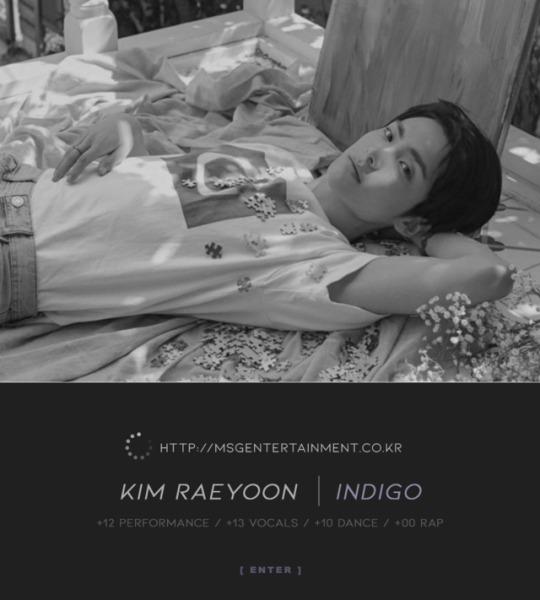
LOADING INFORMATION ON INDIGO’S LEAD VOCAL KIM RAEYOON...
IDOL DETAILS
STAGENAME: Remy
CURRENT AGE: 25
DEBUT AGE: 20
TRAINEE SINCE AGE: 17
COMPANY: MSG
SECONDARY SKILL: Music production
IDOL PROFILE
NICKNAME(S):
rae-ja (來子): based on his tendency to drop unexpected wisdom bombs, give out unsolicited advice, and implement idioms/sajaseong-eo into his everyday vernacular. the nickname plays off ancient chinese philsophers such as confucius (孔子), mencius (孟子), and latozu (老子). (origin: indigo members)
kim huhuhat (김후후핫): based on his distinctive laugh, which almost always begins with inaudible giggling before eventually bursting into sharp, head-thrown laughter. (origin: fans)
shark (상어): based on physical attributes (origin: fans)
INSPIRATION: his mother park jinsook, a once-aspiring folk singer
SPECIAL TALENTS:
impressions of female celebrities (the older the celebrity, the better)
reading with exaggerated emotion
tongue twisters
NOTABLE FACTS:
spent a large chunk of his childhood in lausanne, switzerland
hiccups when eating spicy foods (update: it seems he has cured this issue)
cannot hold his liquor and has the worst tolerance of all the indigo members
it’s rumored that he comes from a wealthy family (the truth: they’re comfortable)
IDOL GOALS
SHORT-TERM GOALS:
improve songwriting skills. win msg’s trust so they hand over more jurisdiction—at least as far as his group’s music and concept trajectory is concerned. bring back the electronic bullshit (but maybe not the dubstep). if growing up in eurotrash switzerland has taught him anything it’s the beauty of electronic done right. make the fusion of electronic, r&b, and ballad a sound to be reckoned with. encourage the other members to participate in defining the group’s creative direction.
LONG-TERM GOALS:
produce more songs for other groups in the company. transition into more behind the scenes work. occupy a senior enough role in music production to participate in executive level decision-making at msg. help steer future generations of idols in the right direction—he knows what it’s like to be mismanaged and would hate for others to experience the same disenchantment that plagued him and the rest of his bandmates for so long. continue to build upon indigo’s foundations to ensure longevity. knows that maybe his goals are idealistic (outward) and restricting (inward), but there simply aren’t any other career options he’d be willing to explore.
IDOL IMAGE
remy bursts onto the scene of winter 2014 with bad boy debonair, mischievous nonchalance, and a penchant for flirtation. play off the strengths and weaknesses of your members, had been their furtive recommendation. here’s the earnest one, the sensitive one, the diligent one, the ethereal one, and now you. you’re sharp edges, a cut and cruel face, thin mouth that only knows how to grin crooked, and tapered eyes whose surest weapon is their wink. hone your artillery, make it yours, and if you can, make them scream.
remy’s never been one for violent metaphors but he runs with this one because his passion outweighs everything else. for the first few years it gets the better of him and he feels some dissonance, has a hard time believing any of what he’s bringing to the stage is coming from anywhere real because of course it isn’t. but in time he learns that this too is part of the art of performance, and that there’s nothing disingenuous about what he’s doing so long as he can differentiate his two egos of what could never be and what actually is. when the music stops so does the charade and this is how he will retain his authenticity.
the public learn the ins and outs of remy, too; the few who care at all take whatever crumbs and scraps they can find, one scattered comeback at a time, to build a more nuanced portrait and uncover the person behind the persona. for the most part their findings are accurate and positive. remy is methodical, prefers to take things a little bit at a time. but is there a reason he takes forever to make a decision? it’s only dessert. it’s called being considerate. his head is in the cloud sometimes, but he’s always thoughtful. must read a lot too, he’s always quoting stuff i’ve never heard of. pretty sure that’s his way of showing off the fact he used to study in europe, never liked elites like him. the only bravado he shows is onstage, not sure what you’re talking about. he’s surprisingly demure behind the scenes. i’ve never seen him cry, not even once. you sure he’s not some kind of robot? i’d pay good money to see a robot with a laugh that cute. weird. i think you mean his laugh is weird.
his reputation—whichever unassembled pieces exist in phone cameras, group chats, morning catchup by the office water cooler—follows remy straight into re᛫group, where he thereupon establishes himself as the show’s sage, a calm meditative tide. the contrasting snarl and bite of his performance style still persists, but the sex appeal stops there. he’s not controversial, not cutthroat enough to propel himself to viral fame. but his character and up-until-this-point unseen predilection for music win him the respect of fellow competitors and the sincere affections of weekly viewers. it’s more than he could possibly ask for.
with indigo’s triumphant return to the industry, remy repays fans old and new by trying his hand at songwriting. building off of the momentum from re᛫group and recognizing the group’s need for growth, msg embraces a brand shift, letting him produce the track for their next comeback. the move effectively solidifies and tacks on a new identity for him as a producer for the group; he acquiesces to the role with ease, and to rave reception. indigo’s reaffirmation in society comes with the affirmative understanding for all of the members that donning their faces, old and new, they’re in it for the long haul.
IDOL HISTORY
a: at five, he is petulant. more than the average five-year-old should be, but who can blame the kid when he feels how jarringly out of place he is in this country and continent, but doesn’t have the vocabulary to express any of it. and so raeyoon prefers to spend his time indoors, in front of the television and away from prying eyes, watching documentaries and music broadcasts he never quite comprehends but thinks he likes the sound of. mother, ever observant from the kitchen, keeps a watchful eye.
b: prideful, not passionate. pride is what keeps him enrolled in piano lessons but keeps him from realizing his potential. his mother sits with him through every practice session, guiding him with an iron will and berating him with an immovable ear. she calls him a technician and so do the judges, but he plays a showstopper in basel and a sonata in bern anyways because people have programs to fill and don’t expect full emotional maturation from a ten year-old. that summer when he takes the train to summer camp abroad—but then, what isn’t abroad at this point—raeyoon distantly wonders where he’s headed.
c: hundreds of miles from home, raeyoon is suddenly compelled to take to the stack of cds that father snuck into his suitcase months ago without ever citing a reason. the cds themselves are bare. the cases in which they are contained are bare save for a rough tracklist penned in permanent marker. the music that he hears isn’t anything familiar. but the voice he hears most certainly is.
d: he passes his audition.
he had gone on a whim. while out shopping for beef bones with grandmother one morning someone had approached him with a business card and while stewing the beef bones back in her apartment he’d asked grandmother to accompany him. he doesn’t remember anything about it beyond a panel of faceless men and his mother’s voice reverberating like a dream in the caverns of his head.
it was never supposed to be this consequential and yet it is, yet here he is feeling the mostsomething he’s felt in his five-thousand-eight-hundred-eight-eight-day life. the news hits him like a brick and his head drops onto the table. grandmother pries the phone away from his hands and dials in another number. with his head still down and eyes closed raeyoon hears her shuffle into the kitchen, open the pot, and plate up the last serving of oxtail soup. he hears the line click on the other end. and then he hears her voice again, so familiar and sweet and real.
e: he blends in here. he laughs thinking back to a decade ago when he’d stood out so sorely, and how that’s exactly what he needs now if he wants a good shot at this. for the next three years, he sharpens himself to the finest point possible.
f: it’s called face. face in the crowd, facing the music, saving face. it’s a word loaded with meanings and potentialities and it feels so wholly appropriate raeyoon almost cries but doesn’t, not yet. he runs through the showcase introduction, performance, final ments. thanks everyone for coming out to support their debut. when the spotlight dims down and the mass of bodies begins to file out of the venue, he spots his mother lingering in the audience, a face in the crowd. raeyoon swallows the lump in his throat. not yet.
g: during rehearsal at a hundred-person venue in gwangju city, a standing light crashes and raeyoon sustains a small injury to his right pinky. no big deal, he tells everyone, it’s not like he’s using it for much anymore anyways, and the appendage is wrapped in gauze and rehearsal continues like clockwork.
he doesn’t notice until a year later, when it’s much too late for buddy tape and a brace, that his pinky never quite recovered right. he opens up a dusty book of liszt arpeggios wondering if maybe now is the time to leverage that skillset, if maybe now he can demonstrate something beyond the technical prowess of his childhood, and fumbles like a clown on the keys. looking down, his pinky tells him the whole story. the first knuckle juts outward and askew with the rest of the finger, like a soul separating from its host.
he thinks back to the past year, and even the year before that, and draws a funny picture not unlike the analogy. it’s not just the finger. negligence is rampant. looking the other way and pretending not to notice everything that’s gone wrong, and everything that could possibly go wrong. what were the meds for, again? chronic pain, allergies, or just insomnia? he forgets. forgets most things, like his pinky finger, like the fact he hasn’t called home in weeks out of shame, and forgets that crying was even an option even though these days he’s got all the time in the world.
h: his saving grace descends in the form of a reality show that sweeps the country and his group by storm. it’s in between mandatory diary entries, the relentless gaze of the camera, stress and sleep deprivation, public defamation, and the thrill of a new stage—another day—that sets raeyoon alight again.
on the last night: a sea of faceless, wailing bodies under the stage, let’s debut, and his mother’s song ringing in his ears. he feels the bodies beside him leave one at a time to claim their spot on the podium, rank five, four, three. he’s tired, hungry, and smiling brighter. two. a rock tied by string. and one. his vision blurs, wet, and opaque. the lump in his throat swells, and he throws his head back to blink away the tears. not yet, not yet.
i: his first hand at production, a first win for the group, and a first concert after five years. it’s nothing short of a miracle, and their story is one that resonates somewhere deep. though revitalized, raeyoon doesn’t hunger for much anymore. but even five years in and with the tides swaying in their favor, he knows better to submit to complacency—scoffs at even the suggestion. with the attention on them—actually, legitimately on them now—the stakes are higher than ever, and he’s simply too grateful to do anything but deliver.
0 notes